Einstein, Chandra, and Fermi Fellows List
Complete List of Einstein, Chandra, and Fermi Fellows 1998 - 2017
- 2017 | 2016 | 2015 | 2014 | 2013 | 2012 | 2011 | 2010 | 2009 | 2008 | 2007 | 2006 | 2005 | 2004 | 2003 | 2002 | 2001 | 2000 | 1999 | 1998
Vivienne Baldassare
Yale University
Triggers of AGN Activity in Dwarf Galaxies
 Vivienne Baldassare grew up in Northport, New York and received her bachelor's degree in physics from Hunter College of the City University of New York in 2012. She was granted a National Science Foundation Graduate Research Fellowship to pursue her PhD in Astronomy at the University of Michigan. Vivienne is currently finishing her PhD under the advisement of Elena Gallo before beginning her Einstein Fellowship at Yale University.
Vivienne Baldassare grew up in Northport, New York and received her bachelor's degree in physics from Hunter College of the City University of New York in 2012. She was granted a National Science Foundation Graduate Research Fellowship to pursue her PhD in Astronomy at the University of Michigan. Vivienne is currently finishing her PhD under the advisement of Elena Gallo before beginning her Einstein Fellowship at Yale University.
Vivienne's dissertation research involved characterizing the properties of active galactic nuclei in dwarf galaxies. Studying black holes in dwarf galaxies is important for our understanding of black hole formation and growth and the co-evolution of galaxies and black holes. However, until recently, few dwarf galaxies were known to contain central black holes, making this a relatively new and unexplored population. Vivienne's research on dwarf galaxies with signatures of active galactic nuclei led to the exciting discovery of a 50,000 solar mass black hole in the nucleus of a dwarf galaxy. As an Einstein fellow, she will explore the properties of the dwarf galaxies that host active galactic nuclei with the goal of understanding what triggers black hole accretion in these objects.
Jennifer Barnes
Columbia University
Transient Modeling for the Multi-Messenger Era
 Jennifer grew up in Minnesota and completed a Bachelor's degree in Physics and Sociology at Macalester College. She will earn a Ph.D. in Physics from the University of California at Berkeley in the summer of 2017.
Jennifer grew up in Minnesota and completed a Bachelor's degree in Physics and Sociology at Macalester College. She will earn a Ph.D. in Physics from the University of California at Berkeley in the summer of 2017.
Jennifer's research uses radiation transport simulations to study explosive astrophysical systems. She is particularly interested in electromagnetic transients triggered by the merger of a neutron star with a second neutron star or a black hole, which may serve as electromagnetic counterparts to gravitational wave signals detected with LIGO/Virgo. Observing electromagnetic and gravitational radiation from these systems would offer us an unprecedented opportunity to constrain exotic physics, including the production of the heaviest elements and the architecture of neutron stars. As an Einstein Fellow, Jennifer plans to use theoretical modeling to understand the key observable features of electromagnetic counterparts, and to identify search strategies and parameter estimation procedures that will maximize the information gleaned from the detection of such a transient.
Rahul Kannan
Smithsonian Astrophysical Observatory
Accurate simulations of galaxy clusters
 Rahul Kannan received his Masters degree in Physics from the Indian Institute of Technology, Kharagpur in 2010 and his Ph.D. is Astrophysics from the University of Heidelberg, Germany in 2014. He was then a Postdoctoral Fellow at MIT, for three years before becoming an Einstein fellow.
Rahul Kannan received his Masters degree in Physics from the Indian Institute of Technology, Kharagpur in 2010 and his Ph.D. is Astrophysics from the University of Heidelberg, Germany in 2014. He was then a Postdoctoral Fellow at MIT, for three years before becoming an Einstein fellow.
Rahul's research focuses on the numerical modeling of various processes that influence the formation and evolution of galaxies. In particular, he is interested in investigating the effects of magnetic fields, thermal conduction, and cosmic ray heating on galaxy clusters. As an Einstein fellow, he plans to run high resolution cosmological simulations to study outstanding questions in cluster physics such as blackhole feedback and its role in the evolution of galaxy clusters, the physical processes impacting the structure of the intra-cluster medium and constraining cosmological parameters using clusters.
Philip Mocz
Princeton University
Moving mesh magnetohydrodynamics: understanding the role of magneto-turbulence in cosmological structure formation and star formation
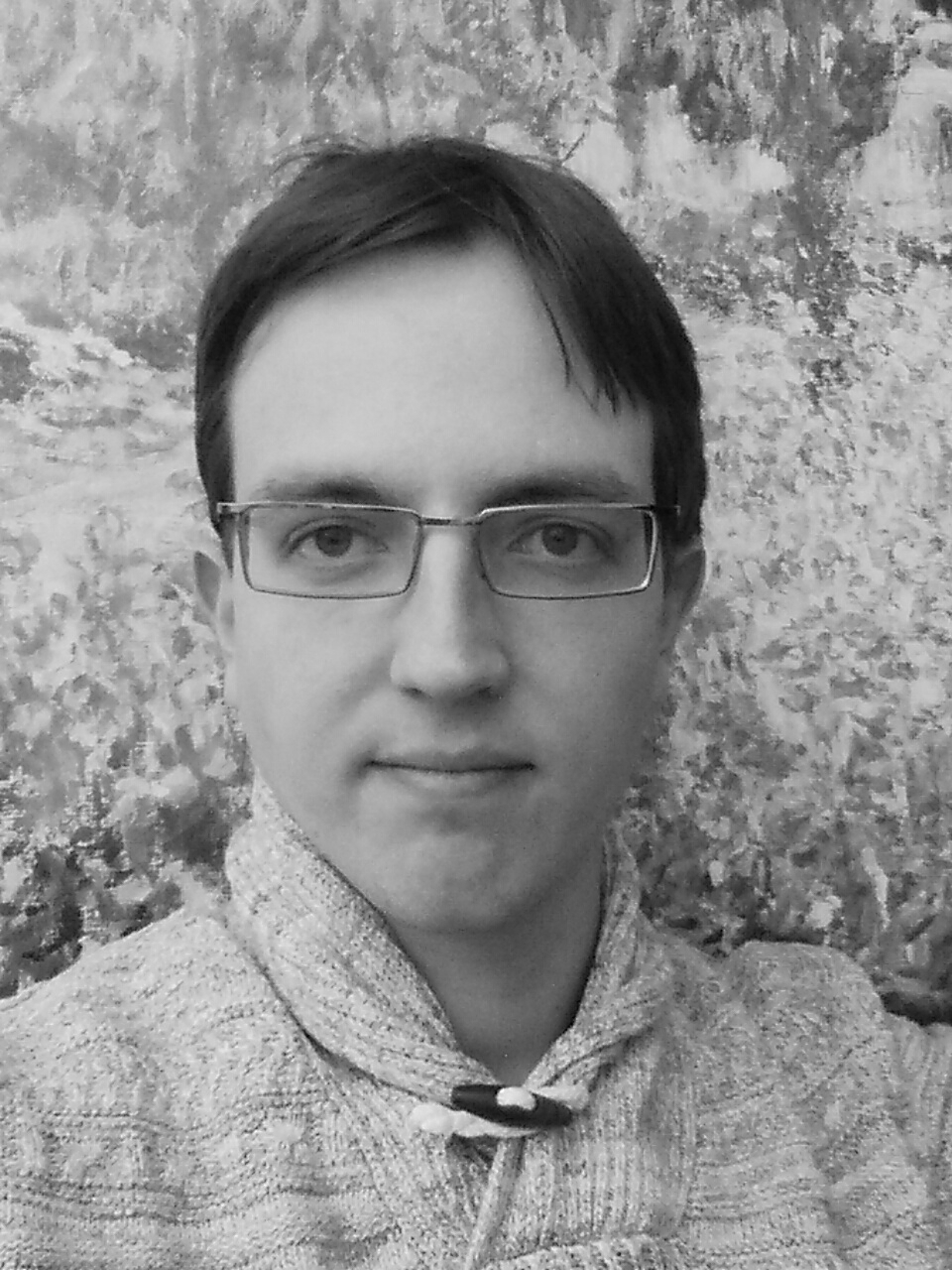 Philip grew up in Hawaii and received his undergraduate degree in Mathematics and Astrophysics from Harvard University in 2012 and will receive his PhD from Harvard University in 2017, where he works with his advisor Lars Hernquist.
Philip grew up in Hawaii and received his undergraduate degree in Mathematics and Astrophysics from Harvard University in 2012 and will receive his PhD from Harvard University in 2017, where he works with his advisor Lars Hernquist.
Philip's research focuses on understanding magnetohydrodynamic (MHD) and turbulent processes in the Universe using state-of-the-art numerical simulations. Philip also has an interest in developing numerical methods that accurately capture physical invariants at the discretized level, including developing moving mesh constrained transport algorithms, smoothed-particle hydrodynamic and pseudo-spectral solvers for superfluids, and memory-efficient integer lattice techniques for the 6D Vlasov-Poisson equations. As an Einstein Fellow, Philip will continue studying fundamental MHD and turbulent processes in the context of star formation and cosmology.
Alexander Philippov
University of California, Berkeley
Kinetic modeling of non-thermal emission from compact object magnetospheres
 Alexander grew up in Kaliningrad (Russia), and moved for his undergraduate studies in Physics to the Moscow institute of Physics and Technology, where he became fascinated about the physics of neutron stars and black holes. He will receive his PhD from the Department of Astrophysical Sciences at Princeton University in August 2017.
Alexander grew up in Kaliningrad (Russia), and moved for his undergraduate studies in Physics to the Moscow institute of Physics and Technology, where he became fascinated about the physics of neutron stars and black holes. He will receive his PhD from the Department of Astrophysical Sciences at Princeton University in August 2017.
As part of his PhD thesis, he developed numerical techniques for simulating three-dimensional magnetospheres of compact objects using a fully kinetic approach and performed the first 3D modeling of pulsar high energy emission. Alexander's research plan for the Einstein Fellowship is to apply these methods to understand the mysteries of pulsar radio emission, electromagnetic precursors of neutron star mergers, and non-thermal emission from accreting black holes.
Anna Rosen
Harvard University
Towards a Complete Understanding of Stellar Feedback in Massive Star Formation
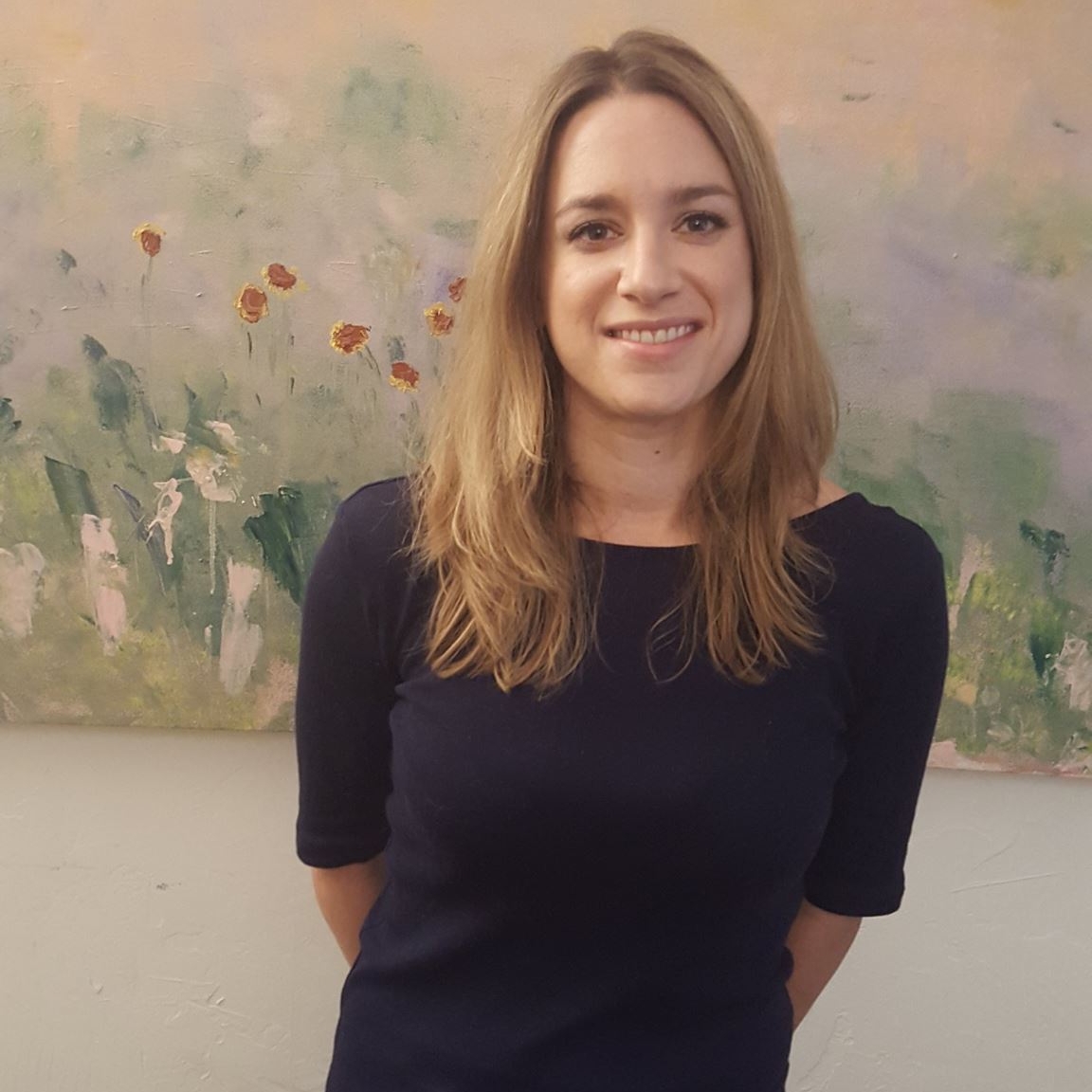
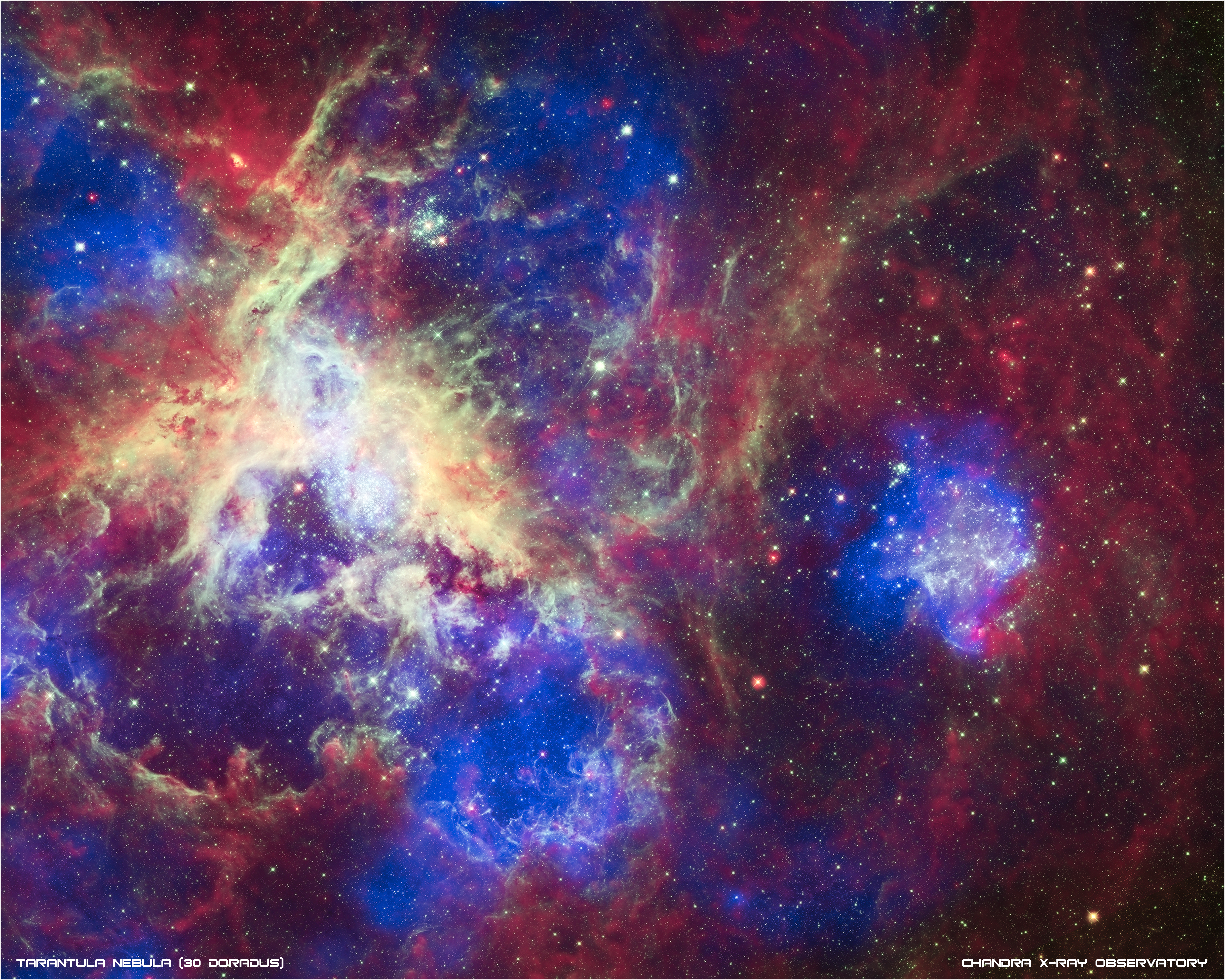 Anna Rosen grew up in Los Angeles, California. She went to community college at Los Angeles Pierce College and transferred to UC Berkeley where she received her Bachelor's degree in Physics and Astronomy. She then moved to Santa Cruz, California to begin her Ph.D. at UC Santa Cruz, working with Mark Krumholz and Enrico Ramirez-Ruiz. During her graduate career she was awarded an NSF graduate research fellowship and the American Association of University Women Dissertation Year fellowship. She will receive her Ph.D. in Spring 2017.
Anna Rosen grew up in Los Angeles, California. She went to community college at Los Angeles Pierce College and transferred to UC Berkeley where she received her Bachelor's degree in Physics and Astronomy. She then moved to Santa Cruz, California to begin her Ph.D. at UC Santa Cruz, working with Mark Krumholz and Enrico Ramirez-Ruiz. During her graduate career she was awarded an NSF graduate research fellowship and the American Association of University Women Dissertation Year fellowship. She will receive her Ph.D. in Spring 2017.
Anna's thesis research primarily focused on the formation of massive stars and massive star clusters (MSCs) with an emphasis on how stellar feedback, the injection of energy and momentum by young stars into their surroundings, affects star formation and environment. She studies these problems through the use of analytical modeling and numerical modeling by developing new computational methods to model stellar feedback. As an Einstein Fellow at the Harvard-Smithsonian CfA, Anna will apply her numerical expertise to develop new computational tools to model a variety of stellar feedback processes, including feedback from radiation, stellar winds, collimated outflows, and cosmic rays that are created at the supersonic shocks produced by colliding stellar winds, to study the destructive role stellar feedback plays in massive star and MSC formation. Her work will facilitate unprecedented strides in our understanding of how stellar feedback can limit star formation and influence galaxy formation and evolution.
Zachary Slepian
Lawrence Berkeley National Laboratory
Triangulating the Universe's Contents with Galaxy Correlations
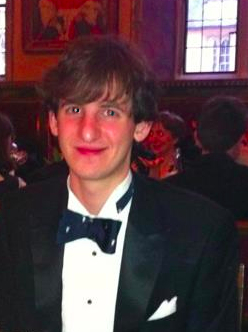 Originally from Fairfield, Connecticut, Zack was raised by a lawyer and an art history PhD. Synthesizing his dad's interest in numbers and his mom's interest in beauty led him to the study of galaxies. He attended public high school, received a BA summa cum laude from Princeton (2011), working with J. Richard Gott, III on his thesis, an MSt in philosophy of physics at Oxford (2012), and a PhD in Astrophysics (2016) from Harvard, advised by Daniel J. Eisenstein.
Originally from Fairfield, Connecticut, Zack was raised by a lawyer and an art history PhD. Synthesizing his dad's interest in numbers and his mom's interest in beauty led him to the study of galaxies. He attended public high school, received a BA summa cum laude from Princeton (2011), working with J. Richard Gott, III on his thesis, an MSt in philosophy of physics at Oxford (2012), and a PhD in Astrophysics (2016) from Harvard, advised by Daniel J. Eisenstein.
During his PhD, Zack focused on Baryon Acoustic Oscillations (BAO) in the 2-point and 3-point correlation function (3PCF) of galaxies, constraining a possible systematic sourced by high-redshift baryon-dark matter relative velocities using the 3PCF. This entailed developing a transformatively fast 3PCF algorithm, enabling the first high-significance detection of BAO in the 3PCF and a measurement of the cosmic distance scale six billion years ago to percent precision.
Zack's current research follows three broad paths: creating theoretical models for large-scale structure, designing fast algorithms to measure it, and applying them to datasets such as BOSS, eBOSS, and DESI. As an Einstein Fellow, he will develop the 3PCF and higher-point statistics into mature cosmological probes, both to constrain cosmological parameters such as primordial non-Gaussianity, BAO, and the growth rate of structure, and to illuminate galaxy formation through measuring galaxy bias.
Krista Lynne Smith
Stanford University
Kepler-K2 AGN Light Curves: A Unique Tool for Accretion Physics and the Detection of Binary AGN
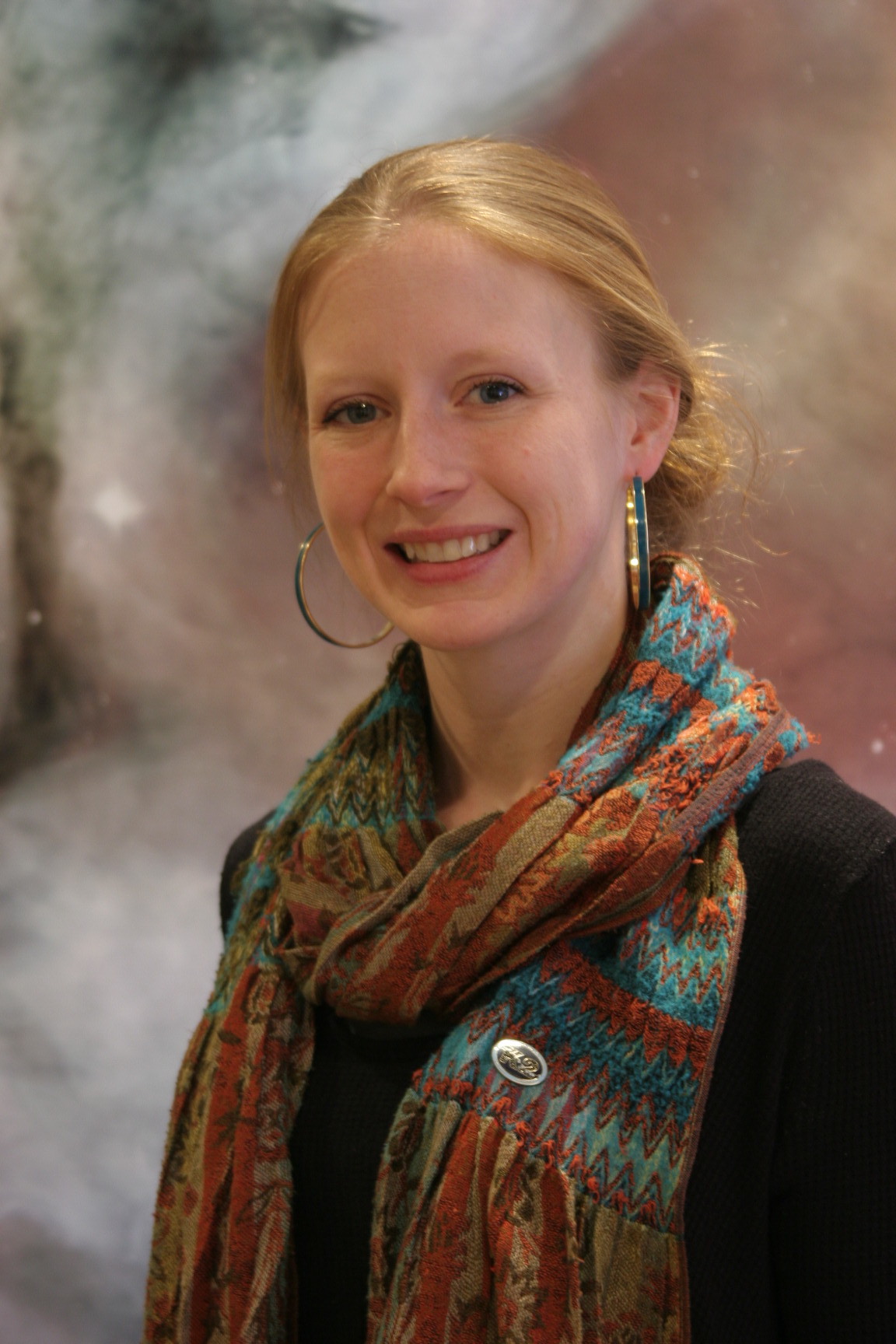 Krista was born in Dallas, Texas. She received her BS in Astronomy from the University of Texas at Austin in 2010, where as an undergraduate she worked on spectroscopic signatures of binary quasars. Her PhD is from the University of Maryland, with significant work having been conducted as a NASA Earth and Space Sciences Fellow at the nearby Goddard Space Flight Center. Krista has used various ground-based facilities across many wavebands, including the VLA, IRTF, and numerous optical observatories, to study obscuration, star formation and feedback in the nuclear regions of active galaxies. The bulk of her thesis work, however, has involved timing studies of active galaxies using light curves from the Kepler and K2 exoplanet detection missions. This required the planning and execution of an X-ray survey of the Kepler/K2 fields of view using the Swift spacecraft, to locate AGN in these regions, as well as the development of a customized pipeline for optical AGN timing to accommodate the unique Kepler data. The resulting light curves are now enabling new insights into accretion physics.
Krista was born in Dallas, Texas. She received her BS in Astronomy from the University of Texas at Austin in 2010, where as an undergraduate she worked on spectroscopic signatures of binary quasars. Her PhD is from the University of Maryland, with significant work having been conducted as a NASA Earth and Space Sciences Fellow at the nearby Goddard Space Flight Center. Krista has used various ground-based facilities across many wavebands, including the VLA, IRTF, and numerous optical observatories, to study obscuration, star formation and feedback in the nuclear regions of active galaxies. The bulk of her thesis work, however, has involved timing studies of active galaxies using light curves from the Kepler and K2 exoplanet detection missions. This required the planning and execution of an X-ray survey of the Kepler/K2 fields of view using the Swift spacecraft, to locate AGN in these regions, as well as the development of a customized pipeline for optical AGN timing to accommodate the unique Kepler data. The resulting light curves are now enabling new insights into accretion physics.
As an Einstein Fellow, Krista will expand her timing analysis to large samples of AGN, as well as into the X-ray waveband, synthesizing the results of optical and X-ray time domain studies to explore the relationship between these wavebands' respective emitting regions. Additionally, Krista will leverage the insights gained from Kepler/K2 studies to interpret possible periodic signatures of binary AGN from current and future ground-based timing surveys, to help characterize possible counterparts to future gravitational wave detections by pulsar timing arrays. Finally, Krista hopes to undertake AGN timing studies with the upcoming Transiting Exoplanet Survey Satellite (TESS), as well as laying groundwork for very large statistical AGN samples that will one day be conducted by LSST.
Iair Arcavi
University of California, Santa Barbara
Studying Tidal Disruption Events and Their Surprising Connection to Post-Starburst Galaxies
 Iair (pronounced "ya-eer") Arcavi was born in Israel, and received his PhD from the Weizmann Institute of Science in 2013. He worked on transient surveys, compiling a large sample of core collapse supernovae. This sample was (and still is being) used to better characterize the population of supernovae from massive stars and to constrain their progenitor scenarios. Towards the end of his PhD, Iair started studying tidal disruption events (TDEs) - the tearing apart of stars by supermassive black holes. Iair identified common properties between hitherto sporadic events and discovered a surprising preference of TDEs to occur in post-starburst galaxies.
Iair (pronounced "ya-eer") Arcavi was born in Israel, and received his PhD from the Weizmann Institute of Science in 2013. He worked on transient surveys, compiling a large sample of core collapse supernovae. This sample was (and still is being) used to better characterize the population of supernovae from massive stars and to constrain their progenitor scenarios. Towards the end of his PhD, Iair started studying tidal disruption events (TDEs) - the tearing apart of stars by supermassive black holes. Iair identified common properties between hitherto sporadic events and discovered a surprising preference of TDEs to occur in post-starburst galaxies.
As an Einstein Fellow, Iair will continue working on TDEs, trying to better understand this peculiar preference for post-starburst galaxies, and taking advantage of it to find many more events. TDEs can be used to signal the presence and measure the properties of otherwise quiescent supermassive black holes. Increasing the sample of observed events will also help constrain models of accretion physics. Iair enjoys traveling (especially to observatories), taking pictures of the night sky, and really good chocolate.
Lia Corrales
University of Wisconsin, Madison
Bright Galactic X-ray Sources Illuminating the Interstellar Medium
 Lia Corrales grew up in San Diego, CA and received her Bachelor's degree in Physics from Harvey Mudd College. She earned her Ph.D. in Astronomy at Columbia University under the advisement of Frits Paerels. She then took a postdoctoral position with Frederick Baganoff at MIT to work on Chandra observations of the Galactic Center. She currently works on observations of Sgr A* in addition to X-ray studies of the interstellar medium. She is an active contributor to astrophysical software including astropy, XSTARDB, and her python suite of dust extinction models: eblur/dust.
Lia Corrales grew up in San Diego, CA and received her Bachelor's degree in Physics from Harvey Mudd College. She earned her Ph.D. in Astronomy at Columbia University under the advisement of Frits Paerels. She then took a postdoctoral position with Frederick Baganoff at MIT to work on Chandra observations of the Galactic Center. She currently works on observations of Sgr A* in addition to X-ray studies of the interstellar medium. She is an active contributor to astrophysical software including astropy, XSTARDB, and her python suite of dust extinction models: eblur/dust.
Lia's research uses bright X-ray binaries as beacons to study the interstellar medium in absorption and scattering. High resolution X-ray spectroscopy probes the abundance of interstellar metals as well as dust composition through extinction. High resolution imaging reveals dust scattering halos, which can be used to probe dust grain sizes and spatial distributions. As an Einstein fellow at UWisc-Madison, Lia will be applying her expertise to perform a survey of interstellar metals and search for dust scattering echoes. By applying her expertise to the highly obscured Galactic Center region, she will study the extended image of Sgr A* and the messy plasma environment at the heart of the Milky Way.
Eric Coughlin
University of California, Berkeley
Black Hole Enlightenment from Tidal Disruption Events
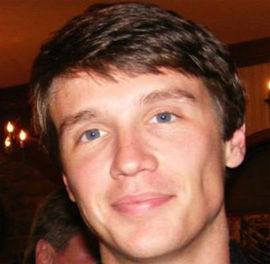 Eric grew up in Eastern Pennsylvania, graduating from Lehigh University with a Bachelor's degree in Astrophysics in 2011. He then moved to Colorado where he began his graduate studies in the Astrophysical and Planetary Sciences department at the University of Colorado, Boulder. He finished his PhD, working with Mitch Begelman and Phil Armitage, in 2016.
Eric grew up in Eastern Pennsylvania, graduating from Lehigh University with a Bachelor's degree in Astrophysics in 2011. He then moved to Colorado where he began his graduate studies in the Astrophysical and Planetary Sciences department at the University of Colorado, Boulder. He finished his PhD, working with Mitch Begelman and Phil Armitage, in 2016.
Eric's research focuses primarily on the physics of tidal disruptions events, which occur when a star is destroyed by the immense gravitational field of a supermassive black hole. As an Einstein fellow at the University of California, Berkeley, he will use numerical simulations and semi-analytic techniques to model the tidally-shredded stellar debris, deciphering how the properties of the disrupted star and the black hole affect this debris and, ultimately, the observable signatures of tidal disruption events. He will also analyze the relativistic jets and accretion disks formed during these events, using their observed properties to gain a deeper understanding of the physics of jet launching and disk formation.
Daniel D'Orazio
Harvard University
Modeling Interactions of Massive Black Hole Binaries with their Environments
 Dan grew up in Orangeville, Pennsylvania. After receiving his B.Sc. in physics and mathematics from Juniata college, he spent a year as a Fulbright Fellow conducting research on the dynamics of the Galactic-center stars at the University of Zurich. Afterwards he was granted an NSF graduate research fellowship at Columbia University where he will receive his PhD in summer 2016.
Dan grew up in Orangeville, Pennsylvania. After receiving his B.Sc. in physics and mathematics from Juniata college, he spent a year as a Fulbright Fellow conducting research on the dynamics of the Galactic-center stars at the University of Zurich. Afterwards he was granted an NSF graduate research fellowship at Columbia University where he will receive his PhD in summer 2016.
His thesis has focused on predicting electromagnetic signatures of gravitational wave sources, which include the interaction of neutron star magnetic fields and black hole event horizons as well as the accretion of gas onto massive black-hole binaries in galactic nuclei.
As an Einstein Fellow Dan will continue his work on theoretical modeling of the interaction between massive black-hole binaries and their surrounding environments with the aim to predict electromagnetic identifiers of the elusive pairs. Dan plans to apply these models to aid in the discovery, characterization, and interpretation of the population of close (sub-parsec separation) massive black-hole binary candidates that are now being uncovered in electromagnetic time domain surveys. Knowledge of the massive black-hole binary population will propel our understanding of the mutual growth of galaxies and black holes and also our understanding of gravitational-wave emission from massive black-hole mergers.
Davide Gerosa
California Institute of Technology
Strong gravity to the realm of observational astronomy
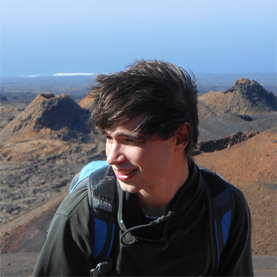 Davide grew up in Monza, northern Italy, and completed his Bachelor's
and Master's degree at the University of Milan. He is now finishing
his PhD at University of Cambridge in the UK, before starting his
Einstein Fellowship at the California Institute of Technology.
Davide grew up in Monza, northern Italy, and completed his Bachelor's
and Master's degree at the University of Milan. He is now finishing
his PhD at University of Cambridge in the UK, before starting his
Einstein Fellowship at the California Institute of Technology.
Davide's research is in gravitational-wave astronomy and relativistic
astrophysics. With the first gravitational-wave detection announced
(and more to come), we are at the beginning of a revolutionary age in
astrophysics. Gravitational waves open a new window on the
astrophysical world, carrying towards us qualitatively new information
on the most energetic processes of the Universe as well as details on
the gravitational interaction itself. Davide develops theoretical and
computational models of gravitational-wave sources to maximize the
outcome of current and future experiments. His efforts so far
concentrated on spin precession in black-hole binaries, post-Newtonian
inspirals, gas accretion onto supermassive black-hole binaries,
black-hole recoils and compact-object formation in alternative theories of gravity.
During his Einstein Fellowship at Caltech, Davide will continue
looking at phenomena where gravity, at the top of its strength, can be
observed directly to decipher the mysteries of the Universe.
Boris Leistedt
New York University
Testing Fundamental Physics with Galaxy Surveys
 Boris Leistedt joined the Center for Cosmology and Particle Physics in New York University after completing his Ph.D. in University College London (UK). He grew up in Belgium and received a master's degree in physics from University Paris Sud (Orsay), as well as a master's degree in electrical engineering jointly from the University of Mons (Belgium) and Supélec (France).
Boris Leistedt joined the Center for Cosmology and Particle Physics in New York University after completing his Ph.D. in University College London (UK). He grew up in Belgium and received a master's degree in physics from University Paris Sud (Orsay), as well as a master's degree in electrical engineering jointly from the University of Mons (Belgium) and Supélec (France).
Boris's research is at the intersection of astronomy, statistics and cosmology: he specializes in analyzing large astronomical data sets to test pivotal questions in astrophysics and high-energy physics. He developed innovative methods to accurately measure the large-scale distribution of galaxies and quasars and track signatures of the early universe in the galaxy distribution. He also showed that massive sterile neutrinos, exotic particles that could be added to the standard model, are not currently needed to explain cosmological observations. Finally, he designed novel methods to measure the clustering and lensing of galaxies in three dimensions, and extract the properties of the cosmic microwave background (CMB) radiation in the presence of complicated Galactic foregrounds.
As an Einstein Fellow, Boris will exploit overlapping multi-wavelength galaxy surveys to map out and test our understanding of the large scale distribution of matter in the Universe.
Morgan MacLeod
Institute for Advanced Study
Compact Binary Assembly Through Common Envelope Episodes and Dynamical Interactions
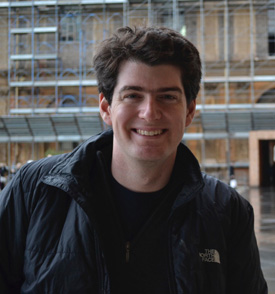 Morgan MacLeod has been a student of astronomy since a 6th grade field trip to a planetarium. Morgan is from Maine, and attended Bowdoin College, where he majored in Physics and Astronomy and did thesis research with Thomas Baumgarte. Morgan did his PhD research in Astronomy and Astrophysics at the University of California, Santa Cruz working with Enrico Ramirez-Ruiz. His current research uses computational methods to explore close encounters between stars and compact objects in binary systems and dense stellar clusters.
Morgan MacLeod has been a student of astronomy since a 6th grade field trip to a planetarium. Morgan is from Maine, and attended Bowdoin College, where he majored in Physics and Astronomy and did thesis research with Thomas Baumgarte. Morgan did his PhD research in Astronomy and Astrophysics at the University of California, Santa Cruz working with Enrico Ramirez-Ruiz. His current research uses computational methods to explore close encounters between stars and compact objects in binary systems and dense stellar clusters.
As an Einstein fellow, Morgan's research will trace the assembly of compact binaries - close binary systems composed of stellar remnants like black holes, white dwarfs and neutron stars - through common envelope episodes and dynamical interactions. Compact binaries in sufficiently close orbits can merge under the influence of gravitational radiation. When they do, they give rise to some of the most luminous outbursts in the universe, but assembly processes are needed to place compact objects in such tight orbits. Morgan's research program will analyze the stellar dynamics, hydrodynamics, and observable signatures of compact binary assembly through computational modeling.
Dheeraj Pasham
Massachusetts Institute of Technology
Quest for the Elusive Intermediate-mass Black Holes
 Dheeraj Pasham ("DJ") received his Bachelor's degree in
Aerospace Engineering from the Indian Institute of
Technology Bombay in 2008. He obtained his Ph.D. from
the University of Maryland in College Park (2014) where
he focused on X-ray timing studies to understand the nature
of ultraluminous X-ray sources in order to answer the question of
whether they host stellar-mass or intermediate-mass black holes.
Dheeraj Pasham ("DJ") received his Bachelor's degree in
Aerospace Engineering from the Indian Institute of
Technology Bombay in 2008. He obtained his Ph.D. from
the University of Maryland in College Park (2014) where
he focused on X-ray timing studies to understand the nature
of ultraluminous X-ray sources in order to answer the question of
whether they host stellar-mass or intermediate-mass black holes.
As an Einstein fellow at MIT, he plans to apply and
extend his expertise in time series analysis to (1)
identify and weigh intermediate-mass black holes, and (2)
address the many open questions concerning the
tidal disruption of stars by supermassive and
intermediate-mass black holes.
Anna Patej
University of Arizona
Tracing the Distribution of Matter in the Outskirts of Galaxy Clusters
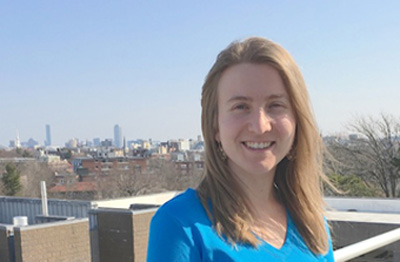 Anna Patej is originally from Warsaw, Poland, but grew up in Orange County, California. She graduated from Princeton University in 2012 with an A.B. in Physics and a certificate in Spanish Language and Culture. Afterwards, she moved to the Physics Department at Harvard University, where she obtained an A.M. in Physics in 2014 and will obtain her Ph.D. in Physics in 2016, supervised by Professors Avi Loeb and Daniel Eisenstein.
Anna Patej is originally from Warsaw, Poland, but grew up in Orange County, California. She graduated from Princeton University in 2012 with an A.B. in Physics and a certificate in Spanish Language and Culture. Afterwards, she moved to the Physics Department at Harvard University, where she obtained an A.M. in Physics in 2014 and will obtain her Ph.D. in Physics in 2016, supervised by Professors Avi Loeb and Daniel Eisenstein.
Anna has worked on a range of topics in extragalactic astrophysics and cosmology, including galaxy clusters, the clustering of galaxies on large scales, and wide-field imaging surveys. As an Einstein Fellow, she intends to leverage the University of Arizona's extensive observational resources to probe the physics of galaxy cluster outskirts using a combination of spectroscopy, photometry, and simulations.
Blake Sherwin
Lawrence Berkeley National Laboratory
Cosmology from High Precision CMB Lensing Science
 Born in the US but raised in Europe, Blake studied physics and mathematics as an undergraduate at Cambridge University before completing his Ph.D. in physics at Princeton University. He then moved to UC Berkeley, where he has worked as a Miller Research Fellow.
Born in the US but raised in Europe, Blake studied physics and mathematics as an undergraduate at Cambridge University before completing his Ph.D. in physics at Princeton University. He then moved to UC Berkeley, where he has worked as a Miller Research Fellow.
Blake's research interests span both theoretical and observational cosmology. A focus of his work has been the gravitational lensing of the CMB, a new cosmological observable that directly probes the distribution of mass and dark matter. As an Einstein fellow, he will work to make CMB lensing measurements with unprecedented precision and use them to tightly constrain the masses of neutrinos, probe the relation of dark and luminous matter, and provide insight into inflation and the early universe.
Daniel Siegel
Columbia University
The Transient Electromagnetic Sky from Binary Neutron Star Mergers
 Daniel grew up in Freiburg, Germany, and studied physics at the University of Freiburg, Imperial College London, and the University of Heidelberg. He obtained his Ph.D. in physics at the Max Planck Institute for Gravitational Physics (Albert Einstein Institute) in Potsdam, Germany, in November 2015 (advisor: Bernard Schutz).
Daniel grew up in Freiburg, Germany, and studied physics at the University of Freiburg, Imperial College London, and the University of Heidelberg. He obtained his Ph.D. in physics at the Max Planck Institute for Gravitational Physics (Albert Einstein Institute) in Potsdam, Germany, in November 2015 (advisor: Bernard Schutz).
Daniel's research mainly centers around unraveling the fundamental physical processes that generate electromagnetic emission in compact binary mergers. As an Einstein Fellow at Columbia University, he will employ general-relativistic magnetohydrodynamic simulations on supercomputers and semi-analytical techniques to model the post-merger phase of binary neutron star mergers and to accurately predict electromagnetic transients from these mergers. Such predictions are of prime importance for multi-messenger astronomy with joint electromagnetic and gravitational-wave observations by advanced LIGO/Virgo and current and future electromagnetic missions across the electromagnetic spectrum. Furthermore, they will also allow Daniel to address long-standing mysteries in astrophysics, including the origin and nature of short gamma-ray bursts, their afterglows, and heavy element formation in the universe.
Daniel Wilkins
Stanford University
Seeing to the Event Horizons of Supermassive Black Holes

 Originally from near Oxford in the South of England, Dan obtained undergraduate degrees in Natural Sciences from Jesus College at the University of Cambridge. Dan remained in Cambridge to complete his Ph.D. at the University's Institute of Astronomy under the supervision of Prof. Andy Fabian. He has since held a CITA National Fellowship at Saint Mary's University in Halifax, Nova Scotia, before moving to Stanford University to take up an Einstein Fellowship.
Originally from near Oxford in the South of England, Dan obtained undergraduate degrees in Natural Sciences from Jesus College at the University of Cambridge. Dan remained in Cambridge to complete his Ph.D. at the University's Institute of Astronomy under the supervision of Prof. Andy Fabian. He has since held a CITA National Fellowship at Saint Mary's University in Halifax, Nova Scotia, before moving to Stanford University to take up an Einstein Fellowship.
Dan's research focuses on how supermassive black holes in active galactic nuclei (AGN) are able to power some of the most luminous objects we see in the Universe through the accretion of material from their surroundings. His research relates X-ray observations to theoretical models he has developed via a number of novel analysis techniques.
As an Einstein Fellow, Dan will be developing new techniques to build up a three-dimensional image of the extreme environments around black holes to understand the structure of the accretion flow, reveal the mysterious X-ray emitting corona and learn how relativistic jets can be launched. Dan is particularly interested in how the next-generation X-ray observatories can be harnessed to study, in detail, the inner workings of accretion on to black holes.
Anna Barnacka
Harvard
Resolving the High Energy Universe with Gravitational Lensing
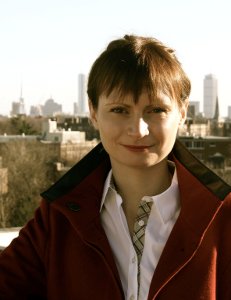 Anna Barnacka is an Einstein Fellow at the Harvard-Smithsonian Center for Astrophysics. She received her Ph.D. in astrophysics from the Nicolaus Copernicus Astronomical Center, Poland and the Universite Paris-Sud 11, France. Her dissertation focused on an array of observational, instrumental and theoretical approaches to understanding distant sources of gamma-ray radiation.
Anna Barnacka is an Einstein Fellow at the Harvard-Smithsonian Center for Astrophysics. She received her Ph.D. in astrophysics from the Nicolaus Copernicus Astronomical Center, Poland and the Universite Paris-Sud 11, France. Her dissertation focused on an array of observational, instrumental and theoretical approaches to understanding distant sources of gamma-ray radiation.
She plans to apply gravitational lensing to a range of astrophysical problems, particularly to using lensing to resolve the high energy universe and to elucidate the physics of gamma-ray sources.
Simeon Bird
Johns Hopkins University
Measuring the Neutrino Mass with Non-Linear Cosmological Structure
 Simeon Bird is from Devon, England. He graduated from the University of Cambridge with an undergraduate degree in Mathematics and a Ph.D. in Astronomy. He subsequently held postdoctoral positions at the Institute for Advanced Study and Carnegie Mellon University.
Simeon Bird is from Devon, England. He graduated from the University of Cambridge with an undergraduate degree in Mathematics and a Ph.D. in Astronomy. He subsequently held postdoctoral positions at the Institute for Advanced Study and Carnegie Mellon University.
Simeon has used cosmological simulations to substantially improve modeling of the effect of massive neutrinos on large scale structure. He has also showed how to robustly extract cosmological and astrophysical information from the Lyman-alpha forest. He has reconciled simulations and observations of Damped Lyman-alpha Absorbers, showing that these objects are a powerful probe of galaxy formation at high redshift.
As an Einstein Fellow, Simeon aims to improve constraints on the neutrino mass using measurements of cosmological structure. Large-scale structure measurements currently provide the tightest neutrino mass constraints, and he seeks to augment them with the greater constraining power present on small scales. Simeon is particularly interested in realising the potential of the Lyman-alpha forest as a probe of cosmological structure formation.
Rebecca Canning
Stanford
The Evolution of Early-type Galaxies: An X-ray Perspective
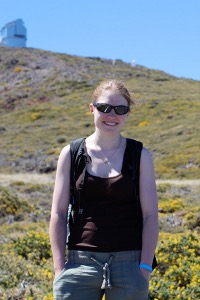 Becky grew up in Reigate, Surrey in the south-east of the UK. She attended Selwyn College at the University of Cambridge where she received her undergraduate degrees in Natural Sciences at the Cavendish Physics department before moving across the road to the Institute of Astronomy where she received her Ph.D. She then moved to Stanford University where she was a postdoc for two years. She will remain at Stanford to pursue her Einstein Fellowship.
Becky grew up in Reigate, Surrey in the south-east of the UK. She attended Selwyn College at the University of Cambridge where she received her undergraduate degrees in Natural Sciences at the Cavendish Physics department before moving across the road to the Institute of Astronomy where she received her Ph.D. She then moved to Stanford University where she was a postdoc for two years. She will remain at Stanford to pursue her Einstein Fellowship.
Becky's research interests have focused on the detailed nature of the heating and cooling balance between the super massive black hole and the gaseous phases of massive galaxies. As an Einstein fellow Becky will use multi-wavelength datasets to better our understanding of the processes which drive the evolution of the most massive galaxies.
Liang Dai
Institute for Advanced Study, Princeton
Understanding the Large-scale Dynamics of Cosmic Structure
 Liang Dai was born and brought up in the city of Hangzhou in southeastern China. He did his undergraduate thesis in particle physics at Peking University in Beijing. He then joined the doctoral program in Department of Physics and Astronomy at Johns Hopkins University in 2011, where he started a pursuit in physical cosmology. Liang will receive his Ph.D. degree in the summer of 2015.
Liang Dai was born and brought up in the city of Hangzhou in southeastern China. He did his undergraduate thesis in particle physics at Peking University in Beijing. He then joined the doctoral program in Department of Physics and Astronomy at Johns Hopkins University in 2011, where he started a pursuit in physical cosmology. Liang will receive his Ph.D. degree in the summer of 2015.
Liang's past research accomplishments dealt with topics including spherical-wave decomposition for cosmological perturbation theory, primordial non-gaussian statistics of Cosmic Microwave Background (CMB) anisotropies, relativistic aberration of the CMB, as well as primordial inflation and reheating. Recently he has been focusing on the general relativistic dynamics of large-scale structure formation in the Universe. He has investigated the possible imprints of primordial gravitational waves in the large-scale distribution of galaxies. He is also enthusiatic about the prospect of detecting gravitational waves from galaxy shape correlation. In addition, with collaborators he has been pioneering in the development of new theoretical framework for a thorough understanding and accurate modelling of the general relativistic non-linearity in large-scale structure formation, which can help with a hunt for new physics from large-scale structure surveys in the era of precision cosmology. Taking an Einstein Fellowship to the Institute of Advanced Study at Princeton, Liang will continue his studies with application of the new methodology on important questions in modern cosmology including tracer bias, galaxy tidal alignment, Dark Energy, and primordial gravity waves.
Shea Garrison-Kimmel
California Institute of Technology
Near-field Cosmology with Hydrodynamical Simulations of the Local Group
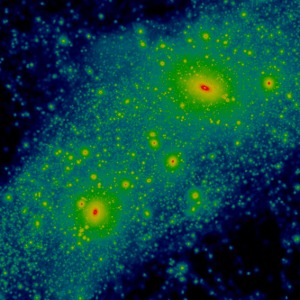 Shea Garrison-Kimmel was born and raised in Lewis County, West
Virginia. He earned his Bachelor's degree in Physics and Astronomy
from Haverford College in May of 2009, and will receive his Ph.D. in
2015 from the University of California: Irvine, where he has worked
with James Bullock.
Shea Garrison-Kimmel was born and raised in Lewis County, West
Virginia. He earned his Bachelor's degree in Physics and Astronomy
from Haverford College in May of 2009, and will receive his Ph.D. in
2015 from the University of California: Irvine, where he has worked
with James Bullock.
Shea's graduate work has focused primarily on better understanding the
dark matter distribution throughout the Local Group. His thesis work
includes the publicly available Exploring the Local Volume in
Simulations (ELVIS) suite, which includes forty-eight Milky Way-like
hosts. Moreover, half of these hosts are in paired configurations
similar to that of the Milky Way and Andromeda galaxies, in order to
accurately model the megaparsec-scale environment of the Milky Way.
Shea has used the ELVIS suite, along with related simulations, to
investigate aspects of dwarf galaxy formation ranging from the
quenching of star formation to the central densities of dwarf
spheroidals. As an Einstein Fellow, Shea will build upon his previous
work with a suite of state-of-the-art hydrodynamical simulations of
Local Group pairs, with a particular focus on the interplay between
dark matter and baryonic processes, such as feedback from massive
stars and supernovae.
Massimo Gaspari
Princeton University
Modeling and Probing the Physics of Multiphase Gas Condensation in Hot Halos
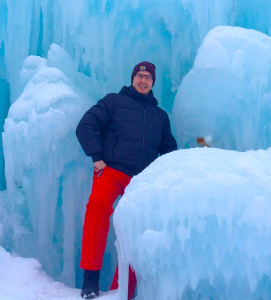 Massimo Gaspari is originally from northern Italy. He earned his
Ph.D. in Astronomy at the University of Bologna in 2012. He was a
postdoctoral Fellow at the Max Planck for Astrophysics in Garching for
three years, before becoming an Einstein Fellow. Massimo develops,
carries out, and analyzes 3D high-resolution MHD simulations via
massively parallel supercomputing. He uses simulations as controlled
astrophysical experiments to interpret multiwavelength observations
and to probe new physical models which help us to clarify the
evolution of galaxies, groups, and clusters of galaxies.
Massimo Gaspari is originally from northern Italy. He earned his
Ph.D. in Astronomy at the University of Bologna in 2012. He was a
postdoctoral Fellow at the Max Planck for Astrophysics in Garching for
three years, before becoming an Einstein Fellow. Massimo develops,
carries out, and analyzes 3D high-resolution MHD simulations via
massively parallel supercomputing. He uses simulations as controlled
astrophysical experiments to interpret multiwavelength observations
and to probe new physical models which help us to clarify the
evolution of galaxies, groups, and clusters of galaxies.
Massimo's current research is focused on understanding the formation
and evolution of multiphase gas in the hot atmospheres of massive
galaxies, and its role in the growth of supermassive black
holes. Understanding the nonlinear physics of multiphase gas which
condenses out of the hot X-ray halo is crucial to interpret
observations and to drive robust modeling of key astrophysical
processes. The multiphase gas is indeed the main fueling channel of
black hole accretion, the related AGN feedback, and star formation
throughout cosmic time.
Daniel Gruen
Stanford Linear Accelerator Center
Frontiers of Cluster Cosmology
Daniel Gruen grew up in Germany. He obtained his B.Sc. and M.Sc.
degrees and is currently finishing his PhD at Ludwig-Maximilians
University, Munich. His studies also included a year-long visit to the
University of Pennsylvania.
Daniel's main research interests are weak lensing analyses of
structures in the Universe, such as clusters of galaxies. These
studies can give us a better understanding of the formation and
evolution of the most massive objects in the universe and the physics
of the two big mysteries of modern cosmology, dark matter and dark
energy. Daniel has also worked on methods for the measurement and
statistical interpretation of weak lensing data. In addition, he was
involved in the correction of instrumental features required for
precision analyses with the Dark Energy Survey (DES).
As an Einstein Fellow, Daniel will work on using DES and other
multi-wavelength data sets to improve our understanding of clusters of
galaxies as probes of fundamental physics.
Maxwell Moe
University of Arizona
The Origin and Fate of Massive Stars through the Eyes of Eclipsing Binaries
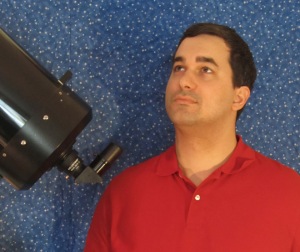 Max grew up as an amateur astronomer under the dark skies outside Fort Collins, Colorado. He received triple Bachelor's degrees in astronomy, physics, and applied mathematics at the University of Colorado (2009) where he researched the binary star origins of planetary nebulae and the energetics of quasar outflows. As a doctoral candidate at Harvard University, Max has investigated binary star formation, the progenitors of Type Ia supernovae (SNe Ia), and the statistics of eclipsing binaries (EBs). He will earn his Ph.D. in astrophysics (July 2015) before starting his Einstein Fellowship at the University of Arizona.
Max grew up as an amateur astronomer under the dark skies outside Fort Collins, Colorado. He received triple Bachelor's degrees in astronomy, physics, and applied mathematics at the University of Colorado (2009) where he researched the binary star origins of planetary nebulae and the energetics of quasar outflows. As a doctoral candidate at Harvard University, Max has investigated binary star formation, the progenitors of Type Ia supernovae (SNe Ia), and the statistics of eclipsing binaries (EBs). He will earn his Ph.D. in astrophysics (July 2015) before starting his Einstein Fellowship at the University of Arizona.
Max's research utilizes large datasets of EBs to test formation theories of close binaries and to provide constraints for population synthesis studies of SNe Ia and X-ray binaries. He developed an automated pipeline to model the physical properties of EBs, which serendipitously revealed a new class of nascent EBs with extreme mass ratios. As an Einstein Fellow, Max plans to further incorporate EBs as astrophysical tools to characterize young massive binaries, understand the nature of binary mass transfer and accretion disks, and quantify the frequency of triple stars and their dynamical evolution toward SNe Ia.
Philipp Moesta
University of California Berkeley
Extreme Core-Collapse Supernovae, Central Engines, and Jets in Three Dimensions
 Philipp Moesta grew up in Kassel, Germany and completed his Diploma (Masters) in Physics at University of Kassel. He went on to obtain his PhD at the Max Planck Institute for Gravitational Physics (Albert Einstein Institute) in Potsdam, working with Luciano Rezzolla and Bernard Schutz on modeling binary black-hole mergers before joining the California Institute of Technology as a postdoctoral fellow.
Philipp Moesta grew up in Kassel, Germany and completed his Diploma (Masters) in Physics at University of Kassel. He went on to obtain his PhD at the Max Planck Institute for Gravitational Physics (Albert Einstein Institute) in Potsdam, working with Luciano Rezzolla and Bernard Schutz on modeling binary black-hole mergers before joining the California Institute of Technology as a postdoctoral fellow.
Philipp's research has focused mainly on studying magnetic field effects in core-collapse supernova explosions and modeling electromagnetic signatures of binary black-hole mergers via 3D numerical simulations. He has developed a number of general-relativistic simulation codes and currently is the main developer of the open-source general-relativistic magnetohydrodynamics code GRHydro as part of the Einstein Toolkit. As an Einstein fellow at UC Berkeley,
he will focus on studying magnetic-field driven central engines of type Ic-BL core-collapse supernova explosions with the goal of constraining the nucleosynthetic yields and observational signatures we can expect from these events.
Anna Pancoast
Smithsonian Astrophysical Observatory
Revealing the Hidden Broad Line Region in AGN: Gas Physics, Outflows, and Black Hole Masses
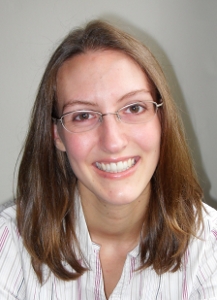 Anna Pancoast grew up in New York state and received Bachelor's
degrees in Physics and Astronomy from Haverford College (2009) outside
of Philadelphia. She will obtain her Ph.D. in Physics from the
University of California Santa Barbara in July 2015.
Anna Pancoast grew up in New York state and received Bachelor's
degrees in Physics and Astronomy from Haverford College (2009) outside
of Philadelphia. She will obtain her Ph.D. in Physics from the
University of California Santa Barbara in July 2015.
Anna's research focuses on uncovering the detailed geometry and
dynamics of gas orbiting around supermassive black holes in active
galactic nuclei (AGN). Constraining the properties of this gas in the
broad line region is crucial for more precise measurements of the
black hole mass using the reverberation mapping technique. As an
Einstein fellow at the Harvard-Smithsonian Center for Astrophysics,
Anna will use the new generation of high-quality reverberation mapping
datasets to increase the number of AGN with more precise black hole
mass measurements and probe the structure and diversity of the broad
line region in AGN using more realistic physical models. By searching
for the signatures of AGN outflows in the broad line region, she will
also explore the relationship between black holes and their host
galaxies.
Kyle Parfrey
Lawrence Berkeley National Laboratory
New Computational Approaches to Black Hole Jets and Coronae
 Kyle Parfrey grew up in Dublin, and received a degree in physics from
the University of Oxford. He was a graduate student at Columbia
University, where he completed his PhD in astronomy in 2012. He is
currently a postdoc in the Department of Astrophysical Sciences at
Princeton University.
Kyle Parfrey grew up in Dublin, and received a degree in physics from
the University of Oxford. He was a graduate student at Columbia
University, where he completed his PhD in astronomy in 2012. He is
currently a postdoc in the Department of Astrophysical Sciences at
Princeton University.
Kyle's research is in relativistic astrophysics, focusing primarily on
the magnetically dominated plasmas surrounding black holes and neutron
stars, which he studies using global numerical simulations. He has
worked on the magnetospheres of isolated and accreting pulsars,
magnetar giant flares, and jets from black holes. Kyle is also
interested in developing numerical methods, and has written the
general-relativistic spectral code PHAEDRA. As an Einstein fellow, his
research will revolve around three-dimensional simulations of black
holes' X-ray coronae, in an effort to understand the disk-driven
magnetized turbulence, consequent heating due to reconnection, and
role of coronal magnetic fields in the launching of relativistic jets.
Brooke Simmons
University of California, San Diego
Illuminating the Black Hole-Galaxy Connection
 Brooke Simmons earned her A.B. in Astrophysical Sciences from Princeton University and her PhD in Astronomy from Yale University, working with Meg Urry on the co-evolution of black holes and galaxies. After her PhD, Brooke moved to the University of Oxford as a James Martin Fellow, where she was also a Junior Research Fellow at Worcester College and then the Henry Skynner Junior Research Fellow at Balliol College.
Brooke Simmons earned her A.B. in Astrophysical Sciences from Princeton University and her PhD in Astronomy from Yale University, working with Meg Urry on the co-evolution of black holes and galaxies. After her PhD, Brooke moved to the University of Oxford as a James Martin Fellow, where she was also a Junior Research Fellow at Worcester College and then the Henry Skynner Junior Research Fellow at Balliol College.
Brooke uses a variety of multi-wavelength data, including highly accurate galaxy morphologies from the Galaxy Zoo project, to research the connection between supermassive black holes and the galaxies that host them. This connection appears to exist over many orders of magnitude in black hole and galaxy mass, but its fundamental origin is still a puzzle. As an Einstein Fellow at the University of California, San Diego, Brooke will investigate supermassive black hole growth in the absence of galaxy mergers, using a rare sample of galaxies which have never had a significant merger yet host growing black holes. These active nuclei, selected because their host galaxies lack the bulges which inevitably result from a galaxy merger, provide powerful leverage to disentangle the complex drivers of black hole growth and determine the origin of observed black hole-galaxy correlations.
James Steiner
Massachusetts Institute of Technology
The Nature of Black Holes
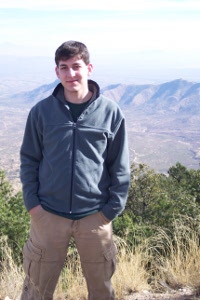 James ("Jack") Steiner grew up in Maumee, Ohio, a suburb of Toledo. As an undergraduate, he studied Physics and Mathematics at Ohio University. Afterwards, he obtained his PhD in Astronomy from Harvard University in 2012. Jack spent a year at the Institute of Astronomy in Cambridge, UK, and is presently a Hubble Fellow at the Smithsonian Astrophysical Observatory.
James ("Jack") Steiner grew up in Maumee, Ohio, a suburb of Toledo. As an undergraduate, he studied Physics and Mathematics at Ohio University. Afterwards, he obtained his PhD in Astronomy from Harvard University in 2012. Jack spent a year at the Institute of Astronomy in Cambridge, UK, and is presently a Hubble Fellow at the Smithsonian Astrophysical Observatory.
Jack's research focuses on X-ray observations of stellar-mass black holes in X-ray binary systems. He will expand upon this work while an Einstein Fellow at MIT, working in particular to improve our understanding of black hole spins, the jets they emit, and the nature of ultraluminous X-ray sources.
Nicholas Stone
Columbia University
Stellar Dynamics Near Supermassive Black Holes
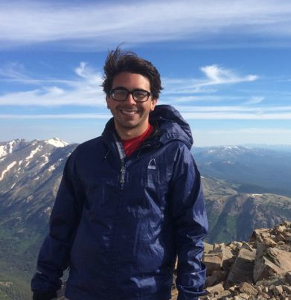 Nicholas Stone was born in Manhattan but grew up in Silver Spring, a suburb of Washington, DC. He received a Bachelor of Arts from Cornell University in 2008, triple majoring in mathematics, physics, and economics. In 2013, he obtained a Ph.D. in Astronomy & Astrophysics from Harvard University, and since then has been a postdoctoral researcher at Columbia University.
Nicholas Stone was born in Manhattan but grew up in Silver Spring, a suburb of Washington, DC. He received a Bachelor of Arts from Cornell University in 2008, triple majoring in mathematics, physics, and economics. In 2013, he obtained a Ph.D. in Astronomy & Astrophysics from Harvard University, and since then has been a postdoctoral researcher at Columbia University.
Nicholas's research covers several topics, mostly focused on stellar dynamics in dense star clusters. A recurring interest is the tidal disruption of stars by supermassive black holes (SMBHs) - violent events that offer a natural laboratory in which to study extremes of accretion astrophysics, and that should serve as a valuable probe of SMBH demographics in the LSST era. His past work on the subject has examined many different aspects of these events, from the stellar dynamical processes that set their rates to the evolution of the resulting accretion flows. He has also studied short gamma ray bursts, and indirect signatures of exoplanetary systems around white dwarf stars. As an Einstein Fellow at Columbia University, Nicholas will extend his past research on tidal disruption events, focusing on interesting open problems such as the circularization of stellar debris and the uncertain origins of observed optical emission. He will also work on other problems, including the formation of supermassive black hole seeds in collisional runaways, and the evolution of circumbinary disks around SMBH binaries.
Sagi Ben-Ami
SAO
Foundations for the Next Generation Space Missions: Science and Technology
 Sagi Ben-Ami, originally from Israel, gained a Master degree in High
energy physics, and after working for a couple of years at CERN on the
ATLAS Muon spectrometer, started a PhD in Astrophysics at the Weizmann
Institute of Science. During his PhD, Sagi was an active member of the
Palomar Transient Factory working on observations of stripped-envelope
SNe. Sagi is one of the optical designers of the Spectral Energy
Distribution machine - an IFS built from the bottom up for transient
classification, the Weizmann Astronomical Multiplexer - a novel
instrument for wide-field imaging, and ULTRASAT - a proposed UV
mission for early detection of explosive transients.
Sagi Ben-Ami, originally from Israel, gained a Master degree in High
energy physics, and after working for a couple of years at CERN on the
ATLAS Muon spectrometer, started a PhD in Astrophysics at the Weizmann
Institute of Science. During his PhD, Sagi was an active member of the
Palomar Transient Factory working on observations of stripped-envelope
SNe. Sagi is one of the optical designers of the Spectral Energy
Distribution machine - an IFS built from the bottom up for transient
classification, the Weizmann Astronomical Multiplexer - a novel
instrument for wide-field imaging, and ULTRASAT - a proposed UV
mission for early detection of explosive transients.
During his postdoctoral fellowship term, Sagi's research will focus on
developing technologies for X-ray observations as a member of the
SMART-X team, as well as on feasibility studies for future X-ray
missions using Chandra/XMM data. Sagi will also continue his work on
novel instrumentation for ground based astronomy across the EM
spectrum.
Blakesley Burkhart
Harvard
New Frontiers for Turbulence in the Intercluster Medium: A Multiwavelength Study of the Velocity Power Spectrum with Chandra, Hubble, and Astro-H
 Blakesley Burkhart was born and raised in Louisville, Kentucky. She
obtained bachelor's degrees in physics and mathematics from the
University of Louisville in 2008 and master's degrees in physics and
astronomy from the University of Wisconsin Madison in 2010. She will
receive her PhD in astronomy in 2014 from the University of Wisconsin
Madison, where she worked under the supervision of Professor Alex
Lazarian.
Blakesley Burkhart was born and raised in Louisville, Kentucky. She
obtained bachelor's degrees in physics and mathematics from the
University of Louisville in 2008 and master's degrees in physics and
astronomy from the University of Wisconsin Madison in 2010. She will
receive her PhD in astronomy in 2014 from the University of Wisconsin
Madison, where she worked under the supervision of Professor Alex
Lazarian.
Blakesley's research focuses on developing statistical techniques for
observational diagnostics of magnetohydrodynamic (MHD) turbulence in
the multiwavelength ISM, using a large range of observational tracers.
As an Einstein fellow at the Harvard Center for Astrophysics,
Blakesley will make the first measurements of the velocity power
spectrum in the intercluster medium (ICM) using Ly-alpha absorption
lines and X-ray emission lines with the application of the velocity
coordinate spectrum (VCS) technique.
Justin Ellis
Jet Propulsion Lab
Astrophysical Implications of Nanohertz Gravitational Wave Detection in Pulsar Timing Data
 Justin Ellis grew up in Jefferson County, West Virginia. He received
his Bachelors degree in physics from West Virginia University in
2009. After completing two years of graduate school at West Virginia
University, he transferred to the University of Wisconsin Milwaukee
where he will receive his Ph.D in astrophysics in the summer of 2014.
Justin Ellis grew up in Jefferson County, West Virginia. He received
his Bachelors degree in physics from West Virginia University in
2009. After completing two years of graduate school at West Virginia
University, he transferred to the University of Wisconsin Milwaukee
where he will receive his Ph.D in astrophysics in the summer of 2014.
Justin's research has focused primarily on the search for
gravitational waves using pulsar timing arrays. He has played a large
role in developing several robust and efficient gravitational wave
detection algorithms. As an Einstein fellow at JPL, he will focus on
analyzing newly released datasets with various methods to search for
GWs and will develop new data analysis techniques that take into
account more complicated GW features so that one can cover a broader
area of parameter space. Finally, he also plans to look beyond current
data releases and perform simulations of future data to determine how
much astrophysical information can be gained from GW observations with
PTAs.
Wen-fai Fong
University of Arizona
Setting the Stage for Advanced LIGO: Characterizing the Electromagnetic Counterparts to Gravitational Wave Signals
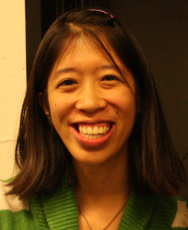 Wen-fai Fong grew up in a quaint suburb outside of Rochester, NY. She
received double Bachelor's degrees in Physics and Biology at MIT
(2008), and will receive her Ph.D. in Astronomy & Astrophysics from
Harvard University in May 2014. Wen-fai plans to pursue her Einstein
Fellowship at the University of Arizona in Tucson.
Wen-fai Fong grew up in a quaint suburb outside of Rochester, NY. She
received double Bachelor's degrees in Physics and Biology at MIT
(2008), and will receive her Ph.D. in Astronomy & Astrophysics from
Harvard University in May 2014. Wen-fai plans to pursue her Einstein
Fellowship at the University of Arizona in Tucson.
Wen-fai's research focuses on the electromagnetic signatures of
compact object mergers, involving either two neutron stars or a
neutron star and a black hole. Such systems are the most promising
candidates for gravitational wave detections with Advanced LIGO/VIRGO,
and are also likely sites for the production of heavy elements in the
Universe. For her dissertation research, she showed that
short-duration gamma-ray bursts, a class of extremely energetic
explosions, likely originate from compact object mergers. As an
Einstein Fellow, Wen-fai will build a multi-wavelength observational
campaign to characterize gamma-ray burst afterglows, "kilonovae", and
other more exotic electromagnetic signatures from compact object
mergers to assess their joint detectability with gravitational
waves. Such research will be crucial prior to the upcoming era of
gravitational wave discovery.
Apart from research, Wen-fai is also passionate about
mentoring. Recognizing the importance of her own mentors, Wen-fai
started a peer and faculty mentoring program for graduate students
while at Harvard. She plans to make such mentoring initiatives an
integral part of her career.
Francois Foucart
Lawrence Berkeley National Lab
Simulating Compact Binary Mergers for Multi-Messenger Astronomy
 Francois grew up in Brussels, Belgium, and completed engineering
degrees at the Free University of Brussels and the Ecole Centrale
Paris. He obtained his PhD from Cornell, working with Saul Teukolsky
on the numerical modeling of black hole-neutron star mergers, then
moved to the Canadian Institute for Theoretical Astrophysics as a
post-doctoral fellow.
Francois grew up in Brussels, Belgium, and completed engineering
degrees at the Free University of Brussels and the Ecole Centrale
Paris. He obtained his PhD from Cornell, working with Saul Teukolsky
on the numerical modeling of black hole-neutron star mergers, then
moved to the Canadian Institute for Theoretical Astrophysics as a
post-doctoral fellow.
Francois' work has been mainly focused on the study of compact binary
mergers as sources of gravitational waves detectable by the next
generation of ground-based detectors (Advanced LIGO/VIRGO/KAGRA), and
on obtaining constraints on the production of potential post-merger
electromagnetic signals (e.g. gamma-ray bursts, kilonovae). These
studies are performed through numerical simulations using a general
relativistic code, with a steadily improving modeling of the most
important physical effects in the hot accretion disk that can be
formed after merger (neutrino radiation, magnetic fields, description
of matter at nuclear densities...).
Francois has also studied the long-term evolution of warped accretion
disk, and in particular the evolution of the orientation of
protoplanetary disks.
Kazumi Kashiyama
University of California, Berkeley
Unveiling Hidden Violent Transients with Multi-Messenger Signals
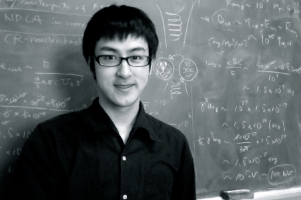 Kazumi Kashiyama grew up in a seaside town in Wakayama, Japan. He
obtained his PhD in Physics from Kyoto University in 2012. Then, he
was a JSPS research fellow at Pennsylvania State University for two
years before becoming an Einstein fellow.
Kazumi Kashiyama grew up in a seaside town in Wakayama, Japan. He
obtained his PhD in Physics from Kyoto University in 2012. Then, he
was a JSPS research fellow at Pennsylvania State University for two
years before becoming an Einstein fellow.
One of his research interests is in the diversity of explosive
deaths of massive stars; gamma-ray bursts (GRBs) and supernovae
(Sne). As an Einstein fellow, he will focus on the roles of
relativistic jets in such explosions. The multi-wavelength and
multi-messenger signals associated with the jet formation,
propagation, and energy dissipation will be theoretically investigated
to clarify how ongoing and upcoming observatories can unveil the
GRB-SN connection.
Ji-hoon Kim
SLAC National Accelerator Laboratory
Building A High-z Quasar-Hosting Galaxy from First Principles -- How Do Galaxies and Massive Black Holes Get Their Masses in the Early Universe?
 Ji-hoon is originally from South Korea, and has always wanted to be a
person who thinks and sees things from a different perspective. He
received his B.Sc. degree in Physics from Seoul National University,
and then his Ph.D. degree from Stanford University. From 2011 to
2013, he was at the University of California, Santa Cruz as an
Inter[Stellar and Galactic] Medium Program of Studies Fellow. In
January 2014, he joined the theoretical astrophysics program at
California Institute of Technology as a Moore Fellow.
Ji-hoon is originally from South Korea, and has always wanted to be a
person who thinks and sees things from a different perspective. He
received his B.Sc. degree in Physics from Seoul National University,
and then his Ph.D. degree from Stanford University. From 2011 to
2013, he was at the University of California, Santa Cruz as an
Inter[Stellar and Galactic] Medium Program of Studies Fellow. In
January 2014, he joined the theoretical astrophysics program at
California Institute of Technology as a Moore Fellow.
Ji-hoon's research has focused on developing a numerical framework
that self-consistently depicts the interplay between galactic
ingredients — gas, stars, and massive black holes (MBHs) - with
minimal fine-tuning. He has applied this tool to various cosmological
contexts including dwarf galaxies, and massive star-forming galaxies
hosting MBHs. He also has helped an inter-institutional effort to
compare different cosmological simulations, called the AGORA Project
designed to advance galaxy formation theory across numerical
platforms. As an Einstein Fellow, he aims to use his tools and
experience to study how galaxies and MBHs acquire their masses in the
high-redshift universe.
Ashley King
Stanford
Unveiling the Physical Nature of Black Hole Winds
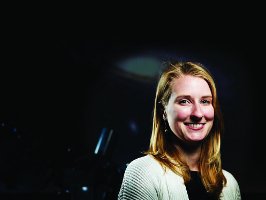 Ashley King is originally from Columbia, MD. She got her B.Sc. degree
from the University of Maryland, double majoring in both astronomy and
physics. She went on to get her Ph. D., in astrophysics at the
University of Michigan, followed by a brief postdoc at the University
of Cambridge.
Ashley King is originally from Columbia, MD. She got her B.Sc. degree
from the University of Maryland, double majoring in both astronomy and
physics. She went on to get her Ph. D., in astrophysics at the
University of Michigan, followed by a brief postdoc at the University
of Cambridge.
Ashley's research focuses on accretion driven outflows from black
holes of all sizes. These outflows, both wide-angle winds and highly
collimated jets, can have an enormous impact on their surroundings,
shaping the environment in which they reside. Understanding and
observationally quantifying the launching mechanisms of these outflows
has been a major goal of hers. During her Einstein fellowship, Ashley
will extend her research, examining the physical impact of winds and
jets on their surroundings. This will shed light on the link between
the two types of outflows as well as the coevolution between black
holes and the galaxies they reside in.
Aleksander Sadowski
MIT
Modeling Radiative Accretion Disks in General Relativity
 Olek Sadowski received his Ph.D. from Copernicus Astronomical Center
in Warsaw, Poland. His supervisor was Prof. Marek Abramowicz who
introduced him to black hole accretion. His thesis was about
super-critical accretion disks. He then moved to Harvard-Smithsonian
Center for Astrophysics to work with Prof. Ramesh Narayan on numerical
simulations of accretion flows. He developed the very first general
relativistic radiation magnetohydrodynamic code KORAL which is used to
study thin and thick accretion disks. As an Einstein Fellow he joined
the MIT Kavli Institute for Astrophysics and Space Research.
Olek Sadowski received his Ph.D. from Copernicus Astronomical Center
in Warsaw, Poland. His supervisor was Prof. Marek Abramowicz who
introduced him to black hole accretion. His thesis was about
super-critical accretion disks. He then moved to Harvard-Smithsonian
Center for Astrophysics to work with Prof. Ramesh Narayan on numerical
simulations of accretion flows. He developed the very first general
relativistic radiation magnetohydrodynamic code KORAL which is used to
study thin and thick accretion disks. As an Einstein Fellow he joined
the MIT Kavli Institute for Astrophysics and Space Research.
Olek's interest focuses on accretion on black holes. He also studies
AGN feedback, tidal disruption events, ejection mechanisms of
relativistic jets, and develops numerical methods.
Johan Samsing
Princeton University
Tidal Effects in Few-body Interactions
 Johan Samsing is from Denmark, and is currently finishing his Ph.D at
the Dark Cosmology Centre, Niels Bohr Institute, University of
Copenhagen. A major part of his recent research has also been done in
the US in collaboration with people at UC Berkeley and UC Santa
Cruz. He is now returning to the US as an Einstein Fellow where he
will continue his work at Princeton University.
Johan Samsing is from Denmark, and is currently finishing his Ph.D at
the Dark Cosmology Centre, Niels Bohr Institute, University of
Copenhagen. A major part of his recent research has also been done in
the US in collaboration with people at UC Berkeley and UC Santa
Cruz. He is now returning to the US as an Einstein Fellow where he
will continue his work at Princeton University.
Johan's recent research spans several topics from constraining dark
energy using the CMB and redshift space distortions, to stellar
dynamics and gravitational wave emission. At the moment he works on
tidal effects in stellar interactions and the dynamics of tidally
disrupted dark matter halos. Part of Johan's future research at
Princeton University will be on gravitational waves, a research area
that (hopefully) will be revolutionized over the forthcoming years
with new detectors coming up. His research will also include a larger
study on the outcomes from interactions between stars and compact
objects, interactions that are believed to be directly linked to the
most energetic events in the universe including GW sources.
Grant Tremblay
Yale
Star Formation amid Kinetic Black Hole Feedback - The unified power of Chandra and ALMA
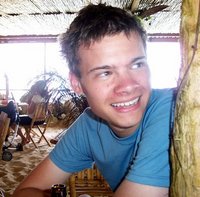 Originally from Maine, USA, Grant Tremblay is currently a Fellow at
the European Southern Observatory (ESO) headquarters near Munich, and
an Astronomer at ESO's Very Large Telescope in Chile. His Ph.D. in
Astrophysics is from the Rochester Institute of Technology, and he was
previously at the Space Telescope Science Institute, the Johns Hopkins
University, and the University of Rochester.
Originally from Maine, USA, Grant Tremblay is currently a Fellow at
the European Southern Observatory (ESO) headquarters near Munich, and
an Astronomer at ESO's Very Large Telescope in Chile. His Ph.D. in
Astrophysics is from the Rochester Institute of Technology, and he was
previously at the Space Telescope Science Institute, the Johns Hopkins
University, and the University of Rochester.
As an incoming Einstein Fellow at Yale University, Grant's research
will use data from the Chandra X-ray Observatory, Hubble Space
Telescope, and the Atacama Large Millimeter/submillimeter Array (ALMA)
to study star formation amid kinetic black hole feedback, a powerful
phenomenon with profound implications for galaxy evolution across
cosmic time.
Hsiang-Yi Karen Yang
University of Maryland, College Park
Unveiling the origin of the Fermi bubbles -- MHD simulations of cosmic rays in the Galaxy.
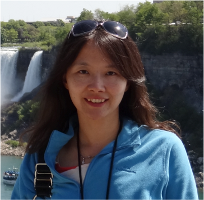 Karen is originally from Taipei, Taiwan. She received her Bachelor's
and Master's degrees in Physics from National Taiwan University. She
obtained her Ph.D. in Astronomy at the University of Illinois in 2011
and is currently a postdoctoral fellow at the University of Michigan.
Karen is originally from Taipei, Taiwan. She received her Bachelor's
and Master's degrees in Physics from National Taiwan University. She
obtained her Ph.D. in Astronomy at the University of Illinois in 2011
and is currently a postdoctoral fellow at the University of Michigan.
Karen's research is concerned with using numerical simulations to
investigate how the combined effects of shocks, radiative cooling,
feedback from active galactic nuclei (AGN), magnetic fields, and
cosmic rays (CRs) influence the observable properties of galaxies and
galaxy clusters. She has been studying cluster cosmology, AGN
accretion and feedback, the role of CRs in galaxies and galaxy
clusters, and theoretical modeling of the Fermi bubbles. As an
Einstein Fellow, she will continue to probe the physical origin of the
Fermi bubbles by using 3D MHD simulations that include relevant CR
physics. In particular, she will identify the most important physical
mechanisms responsible for the spatially uniform hard spectrum of the
observed bubbles. She will also constrain the composition and spectra
of CR particles within the bubbles, thus shedding light on their
origin and on the nature of AGN feedback.
Claude-Andre Faucher-Giguere
Berkeley
The Physics of Black Hole Feedback
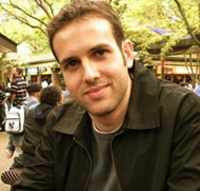 Claude-Andre studied mathematics and physics at McGill University, in
Canada, before earning his Ph.D in astronomy from Harvard University
in 2010. He was then a Miller Research Fellow at the University of
California, Berkeley, for three years before becoming an Einstein
Fellow.
Claude-Andre studied mathematics and physics at McGill University, in
Canada, before earning his Ph.D in astronomy from Harvard University
in 2010. He was then a Miller Research Fellow at the University of
California, Berkeley, for three years before becoming an Einstein
Fellow.
Claude-Andre's research is focused on understanding the diverse
physical processes that drive galaxy formation and evolution. As an
Einstein Fellow, he will develop theoretical models of how
supermassive black holes affect their host galaxies, in particular
through powerful radiation-driven winds. Claude-André is also
interested in the growth of galaxies in a cosmological context and in
how star formation is regulated within galaxies.
Javiera Guedes
Princeton
Understanding the Details of Galaxy Formation and Evolution Through High-Resolution Simulations
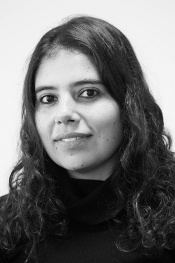 Javiera is originally from Santiago, Chile. She obtained her PhD in
Astronomy and Astrophysics from the University of California, Santa
Cruz in 2011, where she worked on a variety of topics including galaxy
formation, massive black hole dynamics, and planet formation and
detection. Prior to that, Javiera worked on supernova detection at
Berkeley, where she obtained her bachelor degrees on Physics and
Astronomy.
Javiera is originally from Santiago, Chile. She obtained her PhD in
Astronomy and Astrophysics from the University of California, Santa
Cruz in 2011, where she worked on a variety of topics including galaxy
formation, massive black hole dynamics, and planet formation and
detection. Prior to that, Javiera worked on supernova detection at
Berkeley, where she obtained her bachelor degrees on Physics and
Astronomy.
aviera's research is currently focused on understanding the details of
how galaxies form and evolve using high-resolution cosmological
simulations. She was part of the Eris project, which produced one of
the more successful simulations of a Milky Way analog to date. As an
Einstein fellow at Princeton, Javiera will study the details of the
formation and evolution of the most prominent galactic structures and
the fine balance between pristine gas inflows, star formation,
outflows, and the diffuse X-ray emission of galaxies.
James Guillochon
Harvard
Stellar Homicide: The Forensics of Tidal Disruption
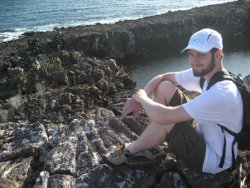 James Guillochon is originally from San Diego, CA, and earned his B.Sc
in Physics at UC Irvine. In 2009, he began work on his doctoral
research at UC Santa Cruz, and will receive in Ph.D. in Astronomy &
Astrophysics in the summer of 2013.
James Guillochon is originally from San Diego, CA, and earned his B.Sc
in Physics at UC Irvine. In 2009, he began work on his doctoral
research at UC Santa Cruz, and will receive in Ph.D. in Astronomy &
Astrophysics in the summer of 2013.
James' research has primarily focused on the consequences of strong
tides in astrophysical systems, guided by the results of
hydrodynamical simulations he has performed. During the course of his
doctoral degree, he has worked on problems in which tides play a
dominant role, including binary systems composed of two white dwarf
stars, close-in gas-rich exoplanets, and AGN flaring resulting from
the tidal disruption of stars. As an Einstein fellow, James will be
performing hydrodynamical simulations of the debris structure
resulting from the tidal disruption of a star by a supermassive black
hole (SMBH). Using the feeding rates derived from these simulations,
he will generate models of the resulting light curves to aid in both
identifying individual disruption events, and to improve our
understanding of accretion processes in general.
Rutger van Haasteren
JPL
Searching for gravitational waves in Pulsar Timing Array data
 Rutger grew up in The Hague, The Netherlands, and received his
master's degree in theoretical physics from Leiden University. In
Leiden Rutger also received his Ph.D. in astrophysics, where he
studied with Yuri Levin.
Rutger grew up in The Hague, The Netherlands, and received his
master's degree in theoretical physics from Leiden University. In
Leiden Rutger also received his Ph.D. in astrophysics, where he
studied with Yuri Levin.
His research has focused mainly on pulsar timing arrays. These are
projects aimed to use high-precision timing of millisecond pulsars to
detect astrophysical gravitational waves. The deviations from regular
pulse arrival times contain information about the dynamical space-time
distortions of the Galaxy. Rutger's Ph.D. work was concerned with the
construction of various data analysis techniques to extract
gravitational-wave signatures from the combined pulse arrival times of
many millisecond pulsars. His research led to the most stringent
published upper-limit on the stochastic background of gravitational
waves, as generated by an ensemble of supermassive black hole binaries
in distant galaxies.
As an Einstein fellow at the Jet Propulsion Laboratory, Rutger aims to
extend his work on pulsar timing array data analysis methods. As it
stands now, while pulsar timing arrays are rapidly gaining
sensitivity, many practical challenges in the analysis of pulsar
timing data still remain. It is not unlikely that a first-ever direct
detection of gravitational waves will be made by pulsar timing arrays,
and Rutger hopes to contribute to such a fundamental discovery.
Yan-Fei Jiang
SAO
Global Radiation MHD Simulations of Black Hole Accretion Disks
 Understanding the accretion process around black holes can help us
understand how the black holes at the centers of galaxies grow and how
the observed relations between the black holes and the host galaxies
are established. When the accretion rate is above a few percent of the
Eddington accretion rate, the inner region of black hole accretion
disk is expected to be radiation pressure dominated. In order to
understand the properties of accretion disks in the radiation pressure
dominated regime, Yan-Fei has developed a new 3D radiation MHD code,
which is accurate in both optically thin and optically thick regimes,
for both radiation pressure and gas pressure dominated flows. He has
applied his new code to study the thermal stability and vertical
structures of radiation pressure dominated accretion disks. He has
also studied how to form high temperature corona with MRI based on his
radiation MHD simulations.
Understanding the accretion process around black holes can help us
understand how the black holes at the centers of galaxies grow and how
the observed relations between the black holes and the host galaxies
are established. When the accretion rate is above a few percent of the
Eddington accretion rate, the inner region of black hole accretion
disk is expected to be radiation pressure dominated. In order to
understand the properties of accretion disks in the radiation pressure
dominated regime, Yan-Fei has developed a new 3D radiation MHD code,
which is accurate in both optically thin and optically thick regimes,
for both radiation pressure and gas pressure dominated flows. He has
applied his new code to study the thermal stability and vertical
structures of radiation pressure dominated accretion disks. He has
also studied how to form high temperature corona with MRI based on his
radiation MHD simulations.
During his Einstein Fellowship, he will carry out global radiation MHD
simulations to study the structures of the accretion disks with MRI
from the fundamental radiation MHD equations, which will be a
significant improvement over the standard thin disk model. He will
focus on how the thermal instability in the radiation dominated disks
saturates and the observational features of the disk. He will be able
to calculate the spectrum from the simulations and compare with
observations directly, which will significantly improve our
understanding on the central engine of AGNs and black hole
binaries. Yan-Fei is also interested in many other radiation
hydrodynamic problems, such as formation of massive stars and
Rayleigh-Taylor instability in the radiation supported
atmosphere. These problems will also be studied with his new code.
Yan-Fei will receive his Ph.D. from the Department of Astrophysical Sciences at Princeton University in August 2013. He was born in NanChang (China), near the Yangtze River. Then he spent 4 years in Beijing for his undergraduate studies and received his B.S. in physics from Tsinghua University.
Tim Linden
University of Chicago
A Multiwavelength Model for Novel Physics in the Galactic Center
 Tim Linden is currently finishing his Ph.D in
Physics at the University of California, Santa Cruz (2013). In 2008, he completed his
B.A. in both Physics and the Integrated Science Program at
Northwestern University. Tim is originally from Stow, Ohio - a suburb
nestled between Cleveland and Akron. As an Einstein Fellow at the
University of Chicago, Tim's research will focus on the indirect
detection of particle dark matter candidates.
Tim Linden is currently finishing his Ph.D in
Physics at the University of California, Santa Cruz (2013). In 2008, he completed his
B.A. in both Physics and the Integrated Science Program at
Northwestern University. Tim is originally from Stow, Ohio - a suburb
nestled between Cleveland and Akron. As an Einstein Fellow at the
University of Chicago, Tim's research will focus on the indirect
detection of particle dark matter candidates.
Dark matter does not interact with the electromagnetic force, which makes it difficult to detect experimentally despite the fact that it is five times as prevalent as ordinary (baryonic) matter in our universe. However, many models indicate that dark mater particles interact through the weak nuclear force, a process which might be seen via the annihilation of two dark matter particles into standard model particles, which we can detect in astronomical observations. This requires both theoretical modeling of the properties of the dark matter particle, in order to determine the signatures which may be seen with current telescopes, as well as understanding the astrophysical backgrounds which might mimic a dark matter signal. The galactic center is an especially interesting region for dark matter searches, because this region is believed to be the brightest source of dark matter annihilations in our universe. However, the galactic center also contains a significant population of high-energy astrophysical sources, which must be understood better in order to uncover any dark matter signal. Tim's work will focus on improving our models of the galactic center region, in order to better differentiate possible dark matter signatures from the bright astrophysical background.
Luke Roberts
Caltech
The Neutrino and Nucleosynthetic Signatures of Newly Formed Neutron Stars
Luke Roberts grew up in Homer, Alaska, received
his Bachelors degree in Physics from Colorado College (2006), and
obtained his Ph.D. in Astronomy and Astrophysics at UC Santa Cruz
(2012). Currently, he is a Dubridge Fellow at the California
Institute of Technology.
Luke's research focuses on theoretical studies of dynamical events in the lives of neutron stars, including their formation during the collapse of massive stars and their deaths during binary neutron star mergers. These events are some of the most promising candidates for multi-messenger astronomy (including gamma rays, neutrinos, and gravitational waves) and are the likely source of the majority of the heavy elements found in the universe. As an Einstein Fellow, Luke will study nuclear processes near the surface of young neutron stars and convection in their cores, both of which strongly influence neutrino emission from these objects. This work will address questions concerning the synthesis of the heavy elements and about the expected neutrino signal of core-collapse supernovae.
Mario Manuel
University of Michigan
Exploring Astrophysical Hydrodynamics in the Laboratory
 Mario Manuel grew up outside of Seattle,
Washington and has always been fascinated by all things related to
outer space. Mario further developed his interest in space sciences
at the University of Washington, where he graduated from in 2006
with B.S.'s in Aerospace Engineering, Physics, and Astronomy. He
was first exposed to experimental research while studying abroad in
Giessen, Germany through an exchange program with the Physics
Department. This led Mario to seek a graduate education in
experimental research at the Massachusetts Institute of Technology
where he earned a S.M. in Aerospace Engineering and his Ph.D. in
Applied Plasma Physics through the High Energy Density (HED) Physics
Division, led by Dr. R. D. Petrasso, of the Plasma Science and
Fusion Center.
Mario Manuel grew up outside of Seattle,
Washington and has always been fascinated by all things related to
outer space. Mario further developed his interest in space sciences
at the University of Washington, where he graduated from in 2006
with B.S.'s in Aerospace Engineering, Physics, and Astronomy. He
was first exposed to experimental research while studying abroad in
Giessen, Germany through an exchange program with the Physics
Department. This led Mario to seek a graduate education in
experimental research at the Massachusetts Institute of Technology
where he earned a S.M. in Aerospace Engineering and his Ph.D. in
Applied Plasma Physics through the High Energy Density (HED) Physics
Division, led by Dr. R. D. Petrasso, of the Plasma Science and
Fusion Center.
Mario's dissertation research focused on the development of a monoenergetic proton radiography system to measure self-generated electromagnetic fields in HED plasmas. In these experiments, high-power lasers irradiate solid targets to generate multi-million-degree plasmas for a few billionths of a second where hydrodynamic instabilities have been predicted to create strong magnetic fields. Mario's work concentrated on making the first experimental measurements of magnetic fields induced by Rayleigh-Taylor growth in laser-produced plasmas. This research was supported in large part by the National Laser User Facility (NLUF) and Fusion Science Center (FSC) programs through the Department of Energy.
As an Einstein Fellow, Mario will work with Dr. R. P. Drake's laboratory astrophysics group at the University of Michigan with the primary goal of 'Exploring Astrophysical Hydrodynamics in the Laboratory'. With present-day high-power laser facilities, astrophysically-relevant HED plasma environments may be readily created in a controlled laboratory setting. Many astrophysical systems can be properly scaled and reproduced at these facilities thereby providing a new experimental window in which to probe these phenomena and directly compare to numerical models. Mario will continue promoting the field of laboratory astrophysics and hopes to encourage other scientists to think about their astrophysical systems and whether some piece of physics may be recreated in the lab.
Selma de Mink
Carnegie Institute
The Impact of Massive Binaries through the Cosmic Ages
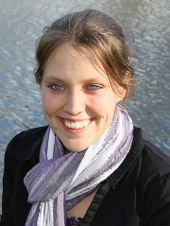 Selma de Mink received her PhD in the
Netherlands at Utrecht University. In 2010 she moved to the United
States for a Hubble Fellowship at the Space Telescope Science
Institute and the Johns Hopkins University in Baltimore.
Selma de Mink received her PhD in the
Netherlands at Utrecht University. In 2010 she moved to the United
States for a Hubble Fellowship at the Space Telescope Science
Institute and the Johns Hopkins University in Baltimore.
She is mainly interested in the evolution of the most massive stars and how they contributed in transforming the pristine Universe into the one in which we live today. Her main expertise is modeling their evolution accounting for effects of rotation, binary interaction and stellar mergers. As an Einstein fellow she will focus on studying the impact of binarity on the role that massive stars throughout cosmic times.
Krzysztof Nalewajko
University of Colorado Boulder
Understanding gamma-ray flares of blazars
 Krzysztof grew up in Ostroda, Poland. He obtained his Master's degree in Astronomy from the University of Warsaw, and Ph.D. in Astronomy from the Nicolaus Copernicus Astronomical Center in Warsaw, working with Marek Sikora. Since 2011, he's been working at JILA, University of Colorado and NIST, in the group of Mitch Begelman.
Krzysztof grew up in Ostroda, Poland. He obtained his Master's degree in Astronomy from the University of Warsaw, and Ph.D. in Astronomy from the Nicolaus Copernicus Astronomical Center in Warsaw, working with Marek Sikora. Since 2011, he's been working at JILA, University of Colorado and NIST, in the group of Mitch Begelman.
His primary research interests are blazars, the structure of relativistic jets in active galaxies, dissipative and radiative processes operating in non-thermal plasmas. As a graduate student, he studied physical properties of reconfinement shocks, calculated radiative properties of reconnection-powered minijets, interpreted the results of multiwavelength observations of blazars. As a postdoc, he investigated the development of current-driven instabilities in jets, and coordinated a multiwavelength campaign on two blazars.
As an Einstein Fellow, Krzysztof will investigate the gamma-ray flares of blazars. This project will involve comprehensive analysis of data from Fermi, characterizing the observed modes of spectral variability, looking for signatures of specific dissipation and particle acceleration processes. He will also investigate the structure and composition of relativistic jets, and the possible role of current-driven instabilities and magnetic reconnection in powering the gamma-ray emission.
Maria Petropoulou
Purdue University
A time-dependent approach to the production of high energy radiation, neutrinos and cosmic rays from relativistic
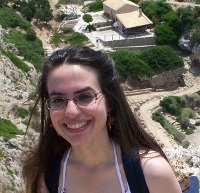 I grew up in Athens, Greece. I have obtained my
Bachelor Degree in Physics (2008) at the National and Kapodistrian
University of Athens, where I have also attended the program of
Master studies in Astrophysics. Just after receiving my
M.Sc. (2010), I was granted the scholarship HERACLEITUS II for
starting my PhD research; I will defend my thesis at the University
of Athens in November 2013.
I grew up in Athens, Greece. I have obtained my
Bachelor Degree in Physics (2008) at the National and Kapodistrian
University of Athens, where I have also attended the program of
Master studies in Astrophysics. Just after receiving my
M.Sc. (2010), I was granted the scholarship HERACLEITUS II for
starting my PhD research; I will defend my thesis at the University
of Athens in November 2013.
My research focuses on non-thermal radiation signatures from relativistic particles in astrophysical plasmas. Particularly, I am interested in studying the emitted radiation from Gamma-Ray Bursts (GRBs) and Active Galactic Nuclei (AGN), since this can provide information about quantities of the emitting region which cannot otherwise be deduced, as, for example, the magnetic field strength, the species and the distribution function of the emitting particles, etc. During my PhD I have focused, on one hand, on the time-dependent calculation of GRB afterglow spectra and light curves by taking into account energy gains and losses that continuously shape the radiating particles spectra. On the other hand, I have studied the properties of specific radiative instabilities that can occur in leptohadronic plasmas. As these provide an efficient mechanism for transferring energy from high-energy particles into radiation as well as exhibiting interesting variability properties, I have applied these to the emitting plasma of blazars.
As an Einstein Fellow at the Purdue University, I plan to extend the study of radiative instabilities in the presence of particle acceleration, since this will provide a self-consistent calculation of their maximum energy and may answer in questions like: Can UHE protons be present in compact astrophysical sources, such emission sites of blazars, or the developed instabilities drain a significant amount of energy from protons? I aim also in working on the problem of the GRB prompt emission, which I will study under two different perspectives (in the context of the "Supercritical Pile" model and of the “Photospheric” model) , since it is not yet clear which is the responsible radiation mechanism for the gamma-ray emission.
Sasha Tchekhovskoy
LBL
New Frontiers in Modeling Accretion, Jets, and their Emission
 Sasha completed his bachelors and masters degrees in Applied Physics and Mathematics at the Moscow Institute of Physics and Technology in Russia. He received his PhD in Astronomy from Harvard University in 2010. He is originally from the town of Dolgoprudny near Moscow, Russia.
Sasha completed his bachelors and masters degrees in Applied Physics and Mathematics at the Moscow Institute of Physics and Technology in Russia. He received his PhD in Astronomy from Harvard University in 2010. He is originally from the town of Dolgoprudny near Moscow, Russia.
Sasha's research concentrates on understanding how accreting black holes produce relativistic, collimated outflows, or jets. Jets are expected to form in the vicinity of a black hole, making them powerful probes of strong-field gravity. Sasha uses tools ranging from pencil and paper calculations to first principles large-scale general relativistic magnetohydrodynamic simulations to quantitatively understand the connection between accretion, black hole spin, and the production of relativistic jets.
In addition to jets, radiation is another important probe of strong gravity. However, how radiation is connected to the dynamical properties of the accretion flow in the most luminous systems is poorly understood. In such systems the radiation can strongly couple to the accretion flow and dramatically change its structure and dynamics. This limits our ability to infer the properties of these important systems, e.g. quasars, ultra-luminous x-ray sources, and tidal disruption events, which most rapidly grow their black holes and can potentially contain intermediate-mass black holes. As an Einstein Fellow, Sasha will construct accurate dynamical models of such luminous systems, account for the back-reaction of radiation on the accretion flow, and develop tools that allow us to accurately infer the properties of these systems from observations (e.g., black hole masses and spins).
Einstein Fellows
Laura Blecha
University of Maryland, College Park
Seeking the Origin of Single and Double Active Black Holes
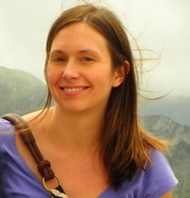
Laura will receive her PhD from Harvard University in May 2012. Prior to this, she completed her bachelors degree at Northwestern University and an MPhil degree at Cambridge University in England. She is originally from Manhattan, KS.
Laura's research concerns the behavior of supermassive black holes and their relationship with their host galaxies, particularly during galaxy mergers. Active black holes play a key role in the evolution of galaxies, and when triggered by mergers, they may be observed as dual or recoiling AGN. These phenomena provide crucial information about the growth history of supermassive black holes as well as their merger rate; such events could be detected with pulsar timing arrays or future gravitational-wave observatories.
As an Einstein Fellow, Laura will use hydrodynamic simulations to model the electromagnetic signatures of black hole pairs during galaxy mergers, motivated by recent discoveries of candidate AGN pairs at an unprecedented rate. A better theoretical understanding of their signatures will aid the design of future surveys and follow-up observations, as well as constraining the timescales for black hole inspiral, merger, and recoil. She also plans to study the various processes in addition to mergers that can trigger AGN activity, especially in the low-luminosity regime where the dominant fueling mechanisms are not well constrained.
Julie Hlavacek-Larrondo
Stanford University
Unraveling AGN Feedback: from Isolated Elliptical Galaxies to Massive Clusters of Galaxies

Julie Hlavacek-Larrondo was raised in Montreal, Canada, and is originally half-Chilean, half-Czech. In 2007, she completed a Bachelor's degree in physics at the University of Montreal, where she was introduced to research through two summer internships, enabling her to consolidate her passion for astrophysics. Julie then pursued a Master's degree in astrophysics focusing on the kinematical analysis of three Sculptor Group galaxies.
In 2009, she moved to the UK to undertake a Ph. D at the University of Cambridge. During her doctorate, Julie has studied AGN feedback in the most luminous, and therefore massive, clusters of galaxies. Massive clusters of galaxies with strong cool cores require extreme mechanical feedback from their central AGN to offset cooling of the intracluster medium. These are the objects where you expect to find the most powerful examples of AGN-driven outflows. Julie's work focused on studying the outflow properties in these systems, as well as the radiative properties of the central AGN, thus providing insight into the black holes that power the outflows. Her work involved using both Chandra X-ray observations, as well as radio observations from the Jansky VLA and GMRT. Julie will receive her Ph. D in the summer of 2012.
As an Einstein fellow at Stanford University, Julie will extend her work to the overall population of elliptical galaxies, from isolated ellipticals to those embedded at the centers of massive clusters of galaxies. Her aim is to provide a detailed view on the role AGN outflows play in the formation and evolution of elliptical galaxies, from heating to metal entrainment, as well as black hole growth.
Ann-Marie Madigan
University of California at Berkeley
The Dynamics of Stars in Disks around Massive Black Holes
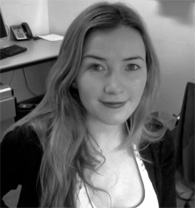
Originally from Dublin, Ann-Marie earned her B.Sc in Physics and Astronomy at the National University of Ireland, Galway. She received both her M.Sc. and her Ph.D. in Astronomy (February 2012) from Leiden Observatory in the Netherlands.
Ann-Marie is interested in the long-term dynamics of stars orbiting massive black holes in the centers of galaxies. Such dynamics are responsible for illuminating massive black holes both through highly-energetic electromagnetic phenomena (e.g., tidal disruptions of stars) and gravitational-wave emission (in-spirals of compact stellar remnants). As an Einstein Fellow, she will study the formation and dynamics of stars in coherently-eccentric disks near massive black holes. She aims to address questions such as how they affect the (possibly counter-rotating) nuclear star cluster in which the massive black hole is embedded, and how disks from repeated formation events interact with one another.
Smadar Naoz
Harvard University
Black Holes through Cosmic Times
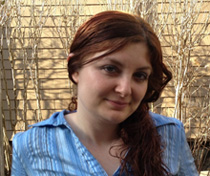
Smadar Naoz is originally from Jerusalem Israel. Her passion for science and astrophysics started at the age of five, ignited by a family tradition of watching Star Trek (the original series). Smadar received her B.Sc. and M.Sc. in the Hebrew University of Jerusalem, and then her Ph.D in Tel Aviv University. In January 2010 she joined Northwestern CIERA as an IAU Gruber fellow postdoc and later moved to Harvard university as an ITC fellow. As an Einstein fellow Smadar is planning to study the evolution and dynamical properties of both massive and stellar mass Black Holes through cosmic times.
The presence of massive black holes at the centers of galaxies influences the star formation and the total radiation released from these galaxies. Galaxies with central BHs go through an active galactic nucleus phase in which they release high-energy radiation as feedback into the intergalactic medium, while galaxies without central BHs tend to release softer radiation. Thus, it seems that BHs evolution is directly linked to the evolution of galaxies and halos.
Furthermore, it seems that major galaxy mergers should inevitably result in the formation of binaries and even triple black hole system. Smadar is planning to study the evolution and dynamical properties of BHs seeds from the first stars to present day. Some of the dynamical properties which are expected for multi-system massive black holes can be scaled down to stellar black holes. This is supported by observations which suggest that many stellar binaries with two compact objects are likely produced through triple evolution. Smadar plans to study triple systems and their crucial role in forming compact objects.
Joey Neilsen
Boston University
Heart of Darkness: High-Resolution X-ray Spectra of Outflows, ADAFs, and Sgr A*

Joey grew up in St. Louis, Missouri and received bachelor's degrees in Physics and Math from Kenyon College in Gambier, OH. He was a graduate student with Julia Lee at Harvard University, where he defended his PhD in April 2011. He is currently a Postdoctoral Associate in the Chandra HETG group at MIT.
Joey's research focuses on understanding the processes that control the mass and energy budget of accreting black holes. How is it that stellar-mass black holes in X-ray binaries can outshine Sgr A*, the supermassive black hole at the center of our Galaxy, by a factor of 1 million? We know that black hole systems can launch powerful relativistic jets and massive, ionized winds, but what determines how much of the accreting mass-energy is channeled into these jets and winds, how much is converted to radiation, and how much is swallowed by the black hole?
As an Einstein Fellow, Joey will search for answers to these questions with parallel X-ray, radio, and infrared studies of X-ray binaries and Sgr A*. He will use high-resolution X-ray spectra from Chandra to probe the links between inflowing gas and outflowing winds, and radio/infrared observations to track the behavior of relativistic jets. By synthesizing his studies of X-ray binaries and supermassive black holes, Joey will search for the physics that connects black holes of all masses to their surroundings.
Chris Nixon
University of Colorado, Boulder
Supermassive Black Holes: Rapid Accretion and Efficient Merging
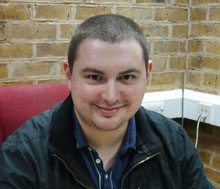
Chris grew up in Durham, England and received his Masters degree in Astrophysics from the University of Cambridge. He then joined the Theoretical Astrophysics Group at the University of Leicester where he will receive his PhD in the summer of 2012.
Chris' current research is based on accretion disc theory, and has focused on the formation and propagation of disc warps and how they can be used to explain various astrophysical phenomena. At the University of Colorado he will consider the effect of chaotic accretion events on to supermassive black holes (SMBH) and SMBH binaries. His aim is to build up a coherent picture of how galaxies and their central black holes grow together.
Christian Reisswig
California Institute of Technology
Long Gamma-Ray Burst Central Engines and Multi-Messenger Astrophysics


I grew up in a village between Hannover and Braunschweig, Germany. Following my undergraduate studies at the Leibniz University Hannover, I joined the Max Planck Institute for Gravitational Physics (Albert Einstein Institute) in Potsdam/Golm to work first on my Diploma project, and subsequently on my PhD research, which I completed in 2010.
During that time, my main focus was on vacuum numerical relativity. I developed and used parallel simulation codes to study the general relativistic dynamics of binary-black hole mergers, their gravitational wave emission, and the properties of the merger remnant.
When I arrived at Caltech as a postdoc in 2010, I became interested in the physics of black hole formation and central engines of long gamma-ray bursts, and how black hole formation can be modelled and simulated on large parallel computers. Long gamma-ray bursts are most likely produced by massive stars which, at the end of their nuclear burning life, are sufficiently massive to undergo core collapse and form a black hole that is surrounded by an accretion disk. Eventually, magneto-hydrodynamic coupling and/or neutrino/anti-neutrino annihilation can power collimated jet outflows. The exact nature and mode of operation of the central engine are still uncertain. Large-scale massively-parallel multiphysics simulations will be necessary for gaining theoretical insight into the long gamma-ray burst central engine.
As an Einstein Fellow, I intend to enhance current simulation codes with the aim of being able to self-consistently simulate stellar collapse and core bounce, proto-neutron star formation, black hole formation, hyperaccretion, accretion disk formation, and ultimately, the onset of collimated jet outflows. This requires general-relativistic magneto-hydrodynamic simulations in full 3D, including a proper treatment of neutrino radiation transport.
Fabian Schmidt
Princeton University
Testing Gravity with Large-Scale Structure
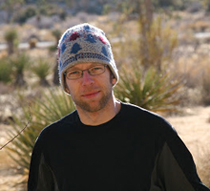
Fabian is a (mostly) theoretical cosmologist and received his PhD in Astronomy & Astrophysics at the University of Chicago in 2009. While there, he also worked on the Pierre Auger Observatory of ultra-high energy cosmic rays. He is currently a Moore Fellow with the Theoretical Astrophysics (TAPIR) group at Caltech.
Fabian's current research focuses on using large-scale structure to probe fundamental questions in cosmology, such as the behavior of gravity on large scales and the origin of the initial perturbations of the Universe. Much of his research involves theoretical work and simulations, but he also works closely with more observationally oriented colleagues. He is also interested in weak gravitational lensing, and has recently completed a measurement of magnification through a new method that uses galaxy sizes and fluxes.
Leo Stein
Cornell University
Probes of Corrections to General Relativity
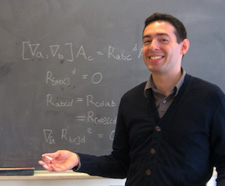
Leo is interested in studying strong gravity from an astrophysical standpoint, a regime which has yet to be experimentally probed. Gravity is quite weak in terrestrial labs and the solar system, but the universe kindly gives us several astrophysical laboratories where gravity is strong. Two such natural laboratories are compact-object binaries and the very early universe. Learning something about strong-field gravity requires "clean" systems which we have a theoretical handle on (for example if we can say that the details of accretion physics are unimportant).
As an Einstein Fellow at Cornell, Leo will investigate comparable mass-ratio compact object binaries with an eye to placing constraints on corrections to general relativity (GR). Data from presently known pulsar binaries can be used to constrain deviations from GR using statistical methods (Markov chain Monte Carlo). In the future, the direct detection of gravitational waves from the same systems will provide even better constraints. Leo will also work on generating accurate gravitational waveforms from extreme mass-ratio inspirals (EMRIs). EMRIs can potentially serve as a sensitive probe of gravitational physics, but only if we are confident that our numerical models are sufficiently accurate—that our numerical methods resolve the physics, and that all the relevant effects (such as spin-curvature coupling and the gravitational self-force) have been included.
Leo will receive his Ph.D. from MIT in the summer of 2012. Before coming to MIT, he studied physics at Caltech. Leo was born in Ukraine, and his family immigrated to the US when he was 5. He grew up in a suburb of Rochester, N.Y.
Meng Su
Massachusetts Institute of Technology
The Nature of the Fermi Bubble: Implications for Galactic Cosmic Rays and the Growth of the Supermassive Black Hole in the Milky Way

Meng Su is completing his Ph.D. in astrophysics at Harvard University, working with thesis advisor Prof. Douglas Finkbeiner on Galactic diffuse gamma-ray emission. He has been working with Prof. John Kovac on the BICEP experiment at the South Pole, and Prof. Matias Zaldarriaga on various topics in theoretical cosmology. Before going to Harvard, Su received his undergraduate degree in physics from Peking University (Beijing University) in 2007. He is originally from Taiyuan in China, a city close to the Yellow River with more than a 2500 year history.
Meng Su is interested broadly in cosmology and high energy astrophysics. He uses gamma-ray, X-ray and microwave observations to study the diffuse emission from our Milky Way, the cosmic ray acceleration and propagation, and the supermassive black hole in the Galaxy. Along with Doug Finkbeiner and Tracy Slatyer, Su has discovered a giant gamma-ray bubble structure in the Milky Way (named, "Fermi Bubble"), which has been selected as one of the top ten physics-related news in 2011 by the American Physical Society. Su has also been studying varies topics in cosmology, including detection of B-mode polarization of the Cosmic Microwave Background (CMB), primordial non-Gaussianity of CMB, gravitational lensing of CMB, cosmic reionization, possible Lorentz violation in the early Universe, and constraining properties of dark energy using various cosmological probes.
Reinout van Weeren
Smithsonian Astrophysical Observatory
Galaxy Clusters: Unraveling the Mystery of the Largest Particle Accelerators in our Universe

Galaxy clusters are the largest gravitationally bound structures in our Universe. They are unique laboratories to study some of the most fundamental questions in astrophysics, related to the physics of particle acceleration and shocks, the growth of large-scale structure, and cosmology. In addition, galaxy clusters are key probes to study the mysterious dark matter that makes up most of the mass in the Universe. Galaxy clusters form through a sequence of mergers of smaller sub-clusters. During merger events, large shock waves are created. In such shocks, the diffusive shock acceleration mechanism should accelerate particles to highly relativistic energies. In the presence of a magnetic field, these particles would form large regions emitting synchrotron radiation at radio wavelengths. It has been suggested that such synchrotron emitting regions can be identified with elongated Mpc-sized radio sources, located mostly in the outskirts of massive merging galaxy clusters.
Reinout van Weeren obtained his PhD from Leiden University in 2011 where he worked on radio observations of merging galaxy clusters. During his PhD research, he discovered several spectacular merging galaxy clusters that provided unique evidence for particle acceleration in cluster merger shocks. In addition, he carried out hydrodynamical simulations of cluster mergers, with the aim of determining the merger parameters for specific clusters. During his Einstein Fellowship, he will combine the results at radio wavelengths with X-ray observations that probe the hot ionized gas which permeates the entire cluster's volume. Several of the newly discovered merging clusters will be imaged at high-resolution with NASA's Chandra X-ray Observatory to search for shocks in the X-ray emitting gas. XMM-Newton observations will be used to map the fainter outskirts of the clusters. Furthermore, observations with the new LOFAR radio telescope and Expanded Very Large Array will be taken to create larger samples of merging clusters, map the radio emission in a largely unexplored frequency range and at unprecedented depth. This combined X-ray and radio approach is crucial to unravel the physics particle acceleration and the origin of magnetic fields in galaxy clusters.
Justin Vandenbroucke
SLAC National Accelerator Laboratory
Development of Innovative Methods for Gamma-ray Astronomy with the Fermi Gamma-ray Space Telescope

Justin Vandenbroucke developed a fascination with astro-particle physics during an undergraduate research project to explore a new method of detecting cosmic neutrinos, acoustically, in the Bahamas. Justin received his PhD from UC Berkeley in 2009 for work on the IceCube neutrino telescope at the South Pole. Since then he has been a Kavli Fellow at the Kavli Institute for Particle Astrophysics and Cosmology, a joint institute of Stanford University and SLAC National Accelerator Laboratory. At Stanford, Justin has developed readout electronics for the Cherenkov Telescope Array (CTA, a future ground-based telescope array for detecting gamma rays at the highest energies currently detectable) and analyzed gamma-ray and positron data from the Large Area Telescope (LAT) onboard the Fermi Gamma-ray Space Telescope.
Justin is interested in the interconnections between the smallest particles and the largest astrophysical objects in the universe. Cosmic neutrinos, gamma rays, and charged particles hold clues to some of the most important questions in contemporary physics and astrophysics, including the sources and acceleration mechanisms of cosmic rays and the nature of dark matter. With Fermi collaborators, he used the Fermi LAT along with the Earth's magnetic field to measure charge-separated cosmic-ray electron and positron spectra in the 20 to 200 GeV range. The ratio of positron to electron spectra has implications for nearby astrophysical sources, such as pulsars, and for dark matter. In addition to analyzing astro-particle data, Justin particularly enjoys developing and operating new instrumentation. As an Einstein Fellow, Justin plans to continue analysis of Fermi gamma-ray data and electronics development for CTA.
Einstein Fellows
Akos Bogdan
Smithsonian Astrophysical Observatory
The Origin and Evolution of Hot Gas in Galaxies and Clusters of Galaxies

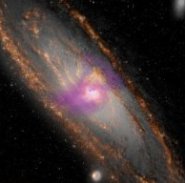
Akos Bogdan grew up in Pecs, Hungary. He became interested in astronomy during high school years. Akos was a graduate student at the Max Planck Institute for Astrophysics in Garching, Germany. He was awarded a PhD in 2010.
Akos is interested in various phenomena of high energy astrophysics. His PhD work mainly focused on the hot X-ray emitting gas from nearby galaxies and on the nature of progenitors of Type Ia Supernovae.
Currently, Akos is interested in the nature and evolution of hot X-ray emitting gas in galaxies and in clusters of galaxies. X-ray studies of the hot gas in galaxies and clusters of galaxies have extensive implications for our understanding of these systems. For example, the chemical enrichment of the interstellar medium and intracluster medium can be studied. The hot gas also reflects stellar feedback processes, and reveals foregoing activity of the central AGN. As an Einstein fellow, Akos will study various evolutionary states of hot gas in galaxies using the Chandra X-ray Observatory. His aim is to better understand Type Ia Supernova driven hot gas outflows and the chemical enrichment processes in low-mass elliptical galaxies, the fate of superwinds in starburst galaxies, and to explore the nature of multiphase gaseous X-ray emitting components in massive elliptical galaxies.
Sam Gralla
University of Maryland (College Park)
Gravitational Radiation from Extreme Mass-Ratio Inspiral
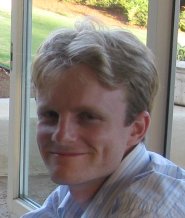
Born and raised in Los Angeles, CA, Sam is currently a (cold) graduate student at the University of Chicago. With supervisor Robert Wald, he has worked on a number of problems in the motion and gravitational-wave emission of astrophysical bodies. He will receive his Ph.D. in the summer of 2011.
The upcoming direct detection of gravitational radiation will open an entirely new window on the universe. One promising source of radiation is the inspiral of a compact object (neutron star or stellar black hole) into a supermassive black hole at the center of a galaxy. Determining the radiative signature of this system requires a detailed understanding of general relativistic particle motion--including radiation reaction effects--in the strongly curved region near a Kerr black hole. As Einstein Fellow Sam will investigate the use of a gauge convenient to the Kerr spacetime to perform self-consistent computations of the motion and gravitational radiation, as well as investigate how effects second-order in the mass ratio can be included in a wave-generation formalism.
Philip Hopkins
University of California - Berkeley
The Co-evolution of Galaxies and Supermassive Black Holes
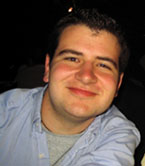
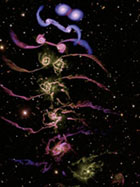
Phil Hopkins is originally from Cleveland, Ohio. He has been interested in physics and astronomy as long as he can remember, but explored a number of other fields as well thanks to the encouragement of fantastic teachers in high school and university. After briefly flirting with a Classics major in college, returned to what he loved and majored in Astronomy. He received his Ph.D. in Astronomy at Harvard University in 2008, and since graduation has been a Miller Fellow in the Department of Astronomy at UC Berkeley.
Phil's research attempts to answer a diverse array of questions related to the evolution of galaxies and super-massive black holes. Using numerical simulations of the formation, evolution, and collisions between galaxies, he is interested in exploring the role of galaxy mergers in shaping not just the galaxies themselves, but also fueling and forming the massive black holes observed at the centers of nearly all massive galaxies today. He is particularly interested in the nature of "feedback" from those black holes -- whether the energy released in their growth can have an impact on the orders-of-magnitude larger scale of the galaxy as a whole. Ultimately, his work seeks to relate and understand the diverse populations of black holes, quasars, starburst galaxies, and both normal and "dead" (non star-forming) galaxies in a self-consistent, merger-driven cosmological scenario.
Matthew Kunz
Princeton University
From Plasma Microphysics to Global Dynamics in Clusters of Galaxies and Accretion Flows

Matthew Kunz is originally from Baltimore, MD. After receiving degrees in Astronomy-Physics and Music from the University of Virginia, he obtained his Ph.D. in Physics from the University of Illinois at Urbana-Champaign. In September of 2009, he joined the Rudolf Peierls Centre for Theoretical Physics at the University of Oxford as a Postdoctoral Research Associate.
Matthew's research focuses on the effects of cosmic magnetism on a wide variety of astrophysical systems and processes. He spent his undergraduate and graduate years investigating the interplay between magnetic fields, dust, chemistry, and nonideal magnetohydrodynamic processes in molecular clouds, protostellar cores, and protoplanetary disks. More recently he has shifted his focus to much hotter and more diffuse astrophysical plasmas. While an Einstein Fellow at Princeton University, he will study the influence of plasma microphysics on the large-scale transport properties of weakly-collsional astrophysical systems, such as the intracluster medium, protogalactic disks, and black hole accretion flows. The ultimate goal is to construct an analytical and numerical modelling framework for astrophysical multiscale plasma dynamics, with an aim towards answering the following basic questions: What prevents the intracluster medium from undergoing catastrophic cooling? What sets the seemingly universal temperature profiles of cool-core clusters? How is the turbulent energy in both the intracluster medium and black hole accretion flows thermalized? How are cluster and accretion disk magnetic fields generated?
Laura Lopez
Massachusetts Institute of Technology
Dissecting Supernova Remnants and HII Regions Observed with Chandra
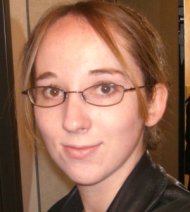
Laura Lopez is completing her PhD in astronomy and astrophysics at the University of California Santa Cruz in June 2011. Before going to UCSC, Laura earned her bachelors degree in physics at the Massachusetts Institute of Technology in 2004. Laura is originally from Barrington, Illinois, a northwest suburb of Chicago.
Laura is interested in understanding both the beginning and ending of the stellar life cycle: how stars are born and how stars end their lives through supernova explosions. Regarding stellar death, Laura uses X-ray observations of supernova remnants to discern the physical properties of compact objects, supernova explosions, chemical mixing, and particle acceleration. Related to stellar birth, Laura analyzes imaging and spectroscopy from across the electromagnetic spectrum (radio, mm, infrared, optical, UV, and X-ray) to assess how massive stars influence their surrounding gas and dust.
Amy Reines
National Radio Astronomy Observatory
Probing the Early Evolution of Galaxies and Massive Black Holes with Nearby Star-Forming Dwarfs
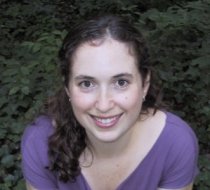
In the earlier universe, the seeds of supermassive black holes are believed to have formed in the progenitors of today's massive galaxies. However, the birth and growth of these high-redshift black holes is poorly constrained by observations. Amy and her collaborators have recently identified a million-solar mass black hole in a nearby, vigorously star-forming, bulgeless dwarf galaxy called Henize 2-10. This serendipitous discovery offers the first opportunity to study a growing black hole in a nearby galaxy much like those in the earlier universe, and opens up an entirely new class of host galaxies in which to search for local analogues of primordial black hole growth. Moreover, this finding has important implications for our understanding of the evolution of galaxies and their central black holes. In particular, the lack of a discernible bulge in Henize 2-10 indicates that black hole growth can precede the build-up of galaxy spheroids, which has been a long-standing debate in the community.
During her Einstein Fellowship, Amy will search for other examples of massive black holes in star-forming dwarf galaxies to begin to characterize them as a population and help constrain theoretical models for the formation of the first high-redshift black holes. Amy will use X-ray observations from the Chandra X-ray Observatory and radio observations from the Expanded Very Large Array to hunt for the radiative signatures of black hole growth that can be hidden at optical wavelengths by intense star formation.
Amy will receive her Ph.D. in August 2011 from the University of Virginia, where she was a NASA Earth and Space Science Fellow.
Rubens Reis
University of Michigan
The Nature and Evolution of Accretion Flows:
Coronal Properties in X-ray
Binaries and Active Galactic Nuclei
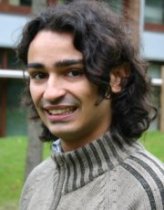
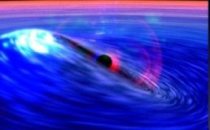
Rubens was born in Sao Paulo, Brazil. At the age of 10 he moved to London, England where he undertook his secondary education. He is currently in the final year of his Ph.D at the University of Cambridge, where he works in the field of X-ray astronomy, specifically exploring the properties of accretion disks surrounding stellar-mass black hole binaries, neutron stars and supermassive black holes in the centre of active galaxies.
His research makes use of the fact that most of the radiation from accreting objects is released within the innermost regions of the accretion disk. In the case of stellar mass black holes the radiation is predominately emitted in the X-ray band, thus allowing the underlying physics of the accretion process to be successfully studied using high quality X-ray spectra.
During his Einstein Fellowship, Rubens will build upon his previous research whilst at the same time exploring new avenues from which we can learn about the physics of these powerful objects. He will systematically explore the properties of the coronal region in a wide range of objects, specifically addressing questions on the role of the corona in state transitions and its relationship to the evolution of the geometry of the accretion flow in X-ray binaries and in the process of jet formation in both AGN and Galactic microquasars.
Ken Shen
Lawrence Berkeley National Laboratory
Theoretical Investigations of Type Ia Supernova Progenitors
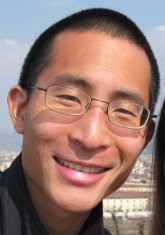
Ken Shen received his Ph.D. in physics from UC Santa Barbara in 2010. Since his graduation, he has been a postdoc in the Department of Astronomy at UC Berkeley. He grew up near San Francisco, CA. His love of physics arose in middle school and was encouraged by great teachers throughout high school and university, but it was not until his graduate studies that his interest in astrophysics and, in particular, accreting white dwarfs in interacting binaries developed.
White dwarfs are the endpoints of stellar evolution for the majority of stars. They have ceased their thermonuclear burning and are held up by electron degeneracy pressure. Many of these white dwarfs exist in binary systems, orbited by a companion star. If the two objects come close enough, mass can be transferred onto the white dwarf's surface, where thermonuclear processes can be rejuvenated by this fresh accretion of nuclear fuel.
Ken's Einstein research will focus on binaries consisting of two white dwarfs, in which the mass transfer from one white dwarf to the other and the subsequent nuclear combustion have been speculated to give rise to Type Ia supernovae. While thousands of Type Ia supernovae have been observed and used empirically in cosmological studies, the basic nature of their progenitor systems is still debated. In light of mounting evidence casting doubt on the standard progenitor scenario involving a single white dwarf, Ken will examine the theoretical evolution of double white dwarf binaries from the onset of mass transfer to the possible ignition of violent thermonuclear burning in order to ascertain their potential as Type Ia supernova progenitors.
Jennifer Siegal-Gaskins
California Institute of Technology
Constraining Dark Matter and Astrophysical Source Classes with Multi-wavelength Cross-correlation

Jennifer received her Ph.D. from the University of Chicago in 2008. Since then she has been a Postdoctoral Fellow at the Ohio State University's Center for Cosmology and Astro-Particle Physics. Jennifer grew up in Frederick, Maryland.
As an Einstein Fellow, Jennifer plans to develop new multi-wavelength techniques to identify a dark matter signal in diffuse emission. The precise nature of dark matter remains one of the outstanding questions at the intersection of particle physics, astrophysics, and cosmology today.
The currently-operating Fermi Gamma-ray Space Telescope has the exciting potential to indirectly detect this elusive component of the universe by observing gamma rays produced by the annihilation or decay of dark matter particles in our Galaxy and throughout the universe. Jennifer's research will focus on using cross-correlation analysis of Fermi gamma-ray data and Planck microwave data to understand the origin of the measured diffuse backgrounds and possibly uncover a dark matter signal. Interestingly, recent results suggest that only ~15% of the diffuse background at gamma-ray energies is composed of emission from members of astrophysical source classes already detected by Fermi, leaving the origin of the majority of the diffuse background a mystery.
Lorenzo Sironi
Harvard University
Nonthermal Particle Acceleration in Relativistic Astrophysical Shocks

Lorenzo will receive his Ph.D. from the Department of Astrophysical Sciences at Princeton University in August 2011. He grew up in a rural village near Milan (Italy), but he moved to Pisa (Italy) for his undergraduate studies in Physics. There, he became fascinated with the richness of physical processes at work in astronomical sources, especially in the most powerful and relativistic objects, like Pulsar Wind Nebulae, AGN jets and Gamma-Ray Bursts.
In his research, he investigates the origin of nonthermal emission from such sources. It is still a mystery how these objects can accelerate particles up to the highly nonthermal energies required to explain the observed spectra, that typically extend from the radio up to the gamma-ray band.
During his Einstein Fellowship, he will address the problem of particle acceleration in relativistic shocks, compressions created where a relativistic flow collides with the surrounding medium. For the first time, recent computational advances allow to study this age-old problem from first principles. He will employ a self-consistent plasma simulation code that he co-developed at Princeton to study the micro-physics and efficiency of shock acceleration. His primary focus will be on the termination shock of Pulsar Wind Nebulae and on the mildly relativistic internal shocks of AGN jets and Gamma-Ray Bursts. By systematically exploring the regimes of shock parameters where particle acceleration can occur, he will be able to place important constraints on the sources of nonthermal radiation. This will help, in concert with dedicated high-energy experiments (Chandra, Fermi, and TeV telescopes), to unveil the nature of astrophysical nonthermal sources.
Einstein Fellows
Simona Giacintucci
University of Maryland
Low-frequency Radio and X-ray Study of the Life Cycles of Relativistic Matter in Galaxy Clusters
Boaz Katz
Institute for Advanced Studies
CR origin, SN shock break-outs
Matthew Kerr
Stanford University
A Powerful Multiwavelength Probe for Pulsar Magnetospheres
Matthew Kistler
Lawrence Berkeley Laboratory
The Origins and Evolution of Ultra-Relativistic Electrons in the Milky Way
Emily Levesque
University of Colorado
Probing Gamma-Ray Burst Host Galaxies out to z ~ 2
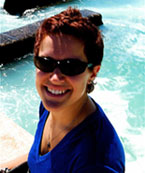
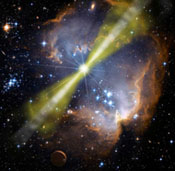
Emily grew up in Taunton, Massachusetts, and received her S.B. in physics from MIT in 2006. She was a Ford Fellow at the University of Hawaii, where she received her PhD in July of 2010. She is currently an Einstein Fellow at the University of Colorado at Boulder.
Emily's primary research interests focus on the progenitor environments of core-collapse supernovae and gamma-ray bursts (GRBs), and the impact of environmental properties on the post-main-sequence evolution of massive stars. Her recent work on core-collapse GRB host galaxies has revealed a robust but puzzling correlation between these events and low-metallicity host galaxies, emphasizing the as-yet-unclear role that metallicity plays in the evolution of GRB progenitors. She is currently interested in further probing these events' host environments, utilizing multi-wavelength diagnostics developed using new stellar population synthesis and photoionization models and the powerful capabilities of the Cosmic Origins Spectrograph on Hubble.
In addition, Emily is also currently studying the physical properties, evolution, and abundances of red supergiants (RSGs) in Local Group galaxies. Previous research with her collaborators has focused on developing effective temperature scales for these evolved massive stars in the Milky Way, Magellanic Clouds, and M31. Her current and future work will focus on extending these studies to lower-metallicity environments and constructing the first detailed abundance profile for RSGs, both of which will act as a crucial test of current stellar evolution and atmosphere models.
Xin Liu
Harvard University
Black Hole Growth and Its Link with Galaxy Evolution


Galaxies are thought to be assembled via hierarchical mergers. Since most massive galaxies are believed to harbor a massive black hole, mergers will lead to the formation of massive binary black holes. Despite the success of the merger scenario in explaining much of the observed AGN phenomenology and properties of the cores of elliptical galaxies, direct observational evidence for massive binary black holes remains surprisingly scarce. It has also been recognized that the evolution of galaxies is intimately linked to the growth of their central massive black holes. Understanding this link has become a central theme in the study of galaxy formation and evolution. Since massive black holes grow predominantly during violently accreting quasar phases, the direct quantification of star formation and stellar content in quasar host galaxies may offer a powerful probe to the problem, yet it is often hampered by the vast contrast ratio between quasar light and starlight. Obscured quasars provide a unique window to the luminous peak growth phase, for which direct spectroscopic host study is extremely challenging for unobscured quasars.
As an Einstein fellow, Xin Liu is working on the systematic identification and characterization of hierarchical mergers of massive black holes and the quantification of star formation and stellar content of luminous obscured quasars. Originally from Jilin, Xin received her BS in physics from Tsinghua University, Beijing. She received a PhD in Astrophysics from Princeton University in 2010, before starting her fellowship at Harvard University.
Tony Mroczkowski
Jet Propulsion Laboratory
Probing High-z Clusters through MUSTANG 9'' SZE Imaging and the Chandra X-ray Observatory
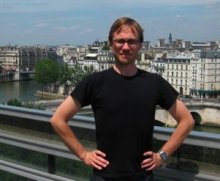
Tony Mroczkowski grew up in Houston, Texas. He went to university mostly in New York City at the Cooper Union for the Advancement of Science and Art, where he e arned a B.S. in engineering, and at Columbia University where he earned an Astro nomy Ph.D. in September, 2008. He performed his first postdoc at the University of Pennsylvania on instrumentation for BLAST-Pol, a submillimeter experiment wi th polarization capabilities designed to measure star formation in our own galax y, before starting the Einstein Fellowship in summer of 2010.
Galaxy clusters are the largest bound objects in the Universe, and can therefore be used as both astrophysical laboratories and to place constraints on the evol ution of large scale structure. Tony is interested in developing the next gener ation of tools for observing various aspects of the Sunyaev-Zel'dovich effect (S ZE) from galaxy clusters. In particular, he aims to image the SZE at high resol ution, where cluster astrophysics meets cluster cosmology. The SZE is proportio nal to the line of sight integral of electron pressure through a cluster, and ha s a redshift independent surface brightness. The SZE at high resolution therefo re probes properties complementary to those probed in Chandra X-ray observations .
His current work at U Penn is with the 90-GHz 9'' bolometer array MUSTANG, on the Green Bank Telescope (GBT). He also hopes to built a much more sensitive repla cement for MUSTANG that could reach background-limited performance (BLIP) and ma ke the GBT the most sensitive ground-based instrument for high-resolution studie s of the thermal gas in clusters.
Ryan O'Leary
University of California at Berkeley
Dynamics of Stars and Gas around Supermassive Black Hole Binaries
Dovi Poznanski
Lawrence Berkeley National Laboratory
Type II Supernovae: Cosmology and Demographics
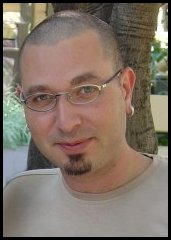
Dovi Poznanski is currently a Postdoctoral fellow at Lawrence Berkeley National Laboratory in the Computational Research Division, having recently been awarded an Einstein Fellowship from NASA. He is a member of various supernova and transient groups such as the Palomar Transient Factory and the Lick Observatory Supernova Search. Poznanski completed his Physics bachelor's degree Magna Cum Laude at the Tel Aviv University in 2002, followed by a PhD in Physics and Astronomy awarded in 2007 on the subject of "Deep and Wide Supernova Surveys." He was a postdoctoral fellow at the Astronomy Department of UC Berkeley between 2007 and 2010, working with the groups of Profs. A. Filippenko, J. Bloom, and P. Nugent. He is still an active member of all three groups.
Poznanski's main research interests focus on the observation and study of supernovae of the different kinds, thermonuclear or core-collapse, nearby or far away, known or predicted. He works as well on their use as cosmological probes, and on harnessing of modern computational capabilities to extract knowledge in the nascent field of synoptic surveys.
Nicolas Yunes
Massachusetts Institute of Technology
Exploiting Gravitational Wave Observations: Modeling of Extreme-Mass Ratio Inspirals and Tests of Fundamental Physics
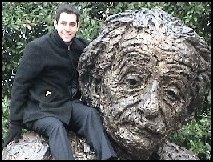
Born and raised in Buenos Aires, Argentina, Nico earned his Bachelors in Science from Washington University in Saint Louis in 2003 under the supervision of Cliff Will, and his PhD from Penn State University in 2008, under the supervision of Ben Owen.
Gravitational waves are the last untested prediction of Einstein's theory of General Relativity. A world-wide effort is currently underway to detect such undulations of spacetime. Their detection will reveal invaluable information about the sources that produced such waves and about the fundamental theory of gravity. As an Einstein fellow, Nico has investigated how gravitational waves emitted from compact object binary systems could be used to probe astrophysics and fundamental physics theory. On the astrophysics side, he has studied how a non-vacuum astrophysical environment (such as an accretion disk or the presence of other supermassive black hole perturbers) imprints itself on gravitational waves, allowing us to extract astrophysical information after detection. On the theory side, he has developed and studied a model-independent framework to test General Relativity once waves are detected. This framework could be used by current ground-based detectors to constrain deviations from General Relativity to exciting new levels.
Einstein Fellows
Tamara Bogdanovic
University of Maryland
Astrophysics of Supermassive Black Holes and Cool Core Clusters

Tamara Bogdanovic's research interests are in astrophysics of black holes. She studies observational signatures associated with single and binary supermassive black holes interacting with gas and stars in galactic nuclei as well as the effects that these interactions have on black holes. She also investigates the role that MHD plasma processes play in the transport of energy and momentum in intracluster medium in clusters of galaxies. While hydrodynamical simulations are one of her main research tools, she enjoys collaborating on observational projects as well, and sure can appreciate real observational data.
Tamara was born and grew up in Serbia where she received her B.Sc. in astrophysics from the University of Belgrade. In 2006 she received a PhD in astronomy from the Pennsylvania State University and moved to the University of Maryland to become an Astronomy Prize Theory Fellow. She is currently an Einstein Postdoctoral Fellow at the University of Maryland.
Rodgrigo Fernandez
Institute for Advanced Study
3D Core-Collapse Supernova Hydrodynamics and X-ray Emission from Compact Objects
Bence Kocsis
Harvard University
Electromagnetic and Gravitational Wave Signatures of Black Hole Mergers
Bret Lehmer
Johns Hopkins University
Towards an Understanding of the Star-Formation and Supermassive Black Hole Accretion History of the Universe Using Deep Extragalactic Surveys
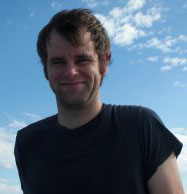
Bret is originally from Iowa. He received undergraduate degrees in Physics and Astronomy from the University of Iowa in 2002 and completed his PhD in Astronomy and Astrophysics from Penn State University in 2007. From 2007 to 2009, he conducted research as a Science and Technology Facilities Council(STFC) fellow. In the fall of 2009 he moved to the Baltimore/Washington D.C. area where he now works as an Einstein Fellow at Johns Hopkins University and Goddard Space Flight Center.
His research uses X-ray observations from Chandra and multiwavelength data from several other facilities to study X-ray binaries and accreting supermassive black holes (SMBHs) in nearby and distant galaxy populations. He is primarily interested in understanding how characteristics of galaxies (including their star-formation activity, mass, and age) and their environments lead to the production of compact objects and the growth of SMBHs.
Matthew McQuinn
University of California at Berkeley
Studies of Dark Matter Substructure and Reionization
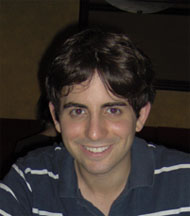
Matt grew up in Virginia and Texas, before moving to Stanford, CA, for his undergraduate education. Matt received his PhD in 2004 from Harvard and currently is a post-doctoral fellow at the University of California, Berkeley.
Matt specializes in the study of the stuff between galaxies (which constitutes the majority of the mass in the Universe). He studies the properties of this intergalactic matter and its evolution from the infant Universe up until today. He works on modeling how it was ionized, heated, and enriched with metals as well as on developing methods to measure its evolution. He is also interested in the nature of the first galaxies, the large-scale structure of the Universe, the properties of the dark matter, and radiative transfer algorithms.
Brian Metzger
Princeton University
The Observational Signature of Compact Object Mergers and Accretion-Induced Collapse.
Eran Ofek
Caltech
The Nature of Long-Duration Radio Transients
Eduardo Rozo
University of Chicago
Cosmology from the SDSS and DES Cluster Samples
Born in Bogota, Colombia, Eduardo earned his Ph.D. in physics at the University of Chicago. After graduation, he joined The Ohio State University as a postdoctoral fellow at the Center for Cosmological and Astro-Particly Physics (CCAPP), and is now an Einstein Fellow at the University of Chicago.
Eduardo's research focuses on addressing the problem of constraining cosmological models using optically selected galaxy clusters. Over the next several years, a wide range of deep and wide photometric surveys will be coming online, including DES, HSC, PanSTARRS, and LSST. The data from these surveys will allow us to identify hundreds of thousands of clusters, leading to some of the statistically powerful data sets of the coming decade. Eduardo's work addresses how to succesfully tap into this statistical power, and how these surveys can complement other large scale surveys such as those in the X-ray (e.g. eRosita) and SZ (e.g. SPT, ACT, and Planck). Eduardo's goal is to use these various data sets to map out the growth of large scale structure across cosmologically relevant time scales as a means to test whether our accelerating universe is driven by a new form of energy --- the so called dark energy --- or whether this accelerating phase is signaling a breakdown of general relativity on cosmological scales.
Kevin Schawinski
Yale University
The Co-Evolution of Galaxies and their Supermassive Black Holes

Kevin Schawinski grew up in Switzerland and Germany. He received his D.Phil from Oxford University and stayed on briefly as the Henry Skynner Fellow at Balliol College. He moved to Yale University in 2008 and started his Einstein Fellowship in 2009.
Kevin works on the role that black holes play in the formation and evolution of galaxies. What is the correlation between black hole growth and evolutionary phases of galaxies? Which galaxies feed their black holes? And are black hole accretion phases associated with, and perhaps causing a change in the evolutionary trajectory of galaxies? And what is the origin of supermassive black holes in the very early Universe?
Kevin uses stellar populations to reconstruct the star formation histories of galaxies to infer the sequence of events surrounding black hole accretion events. He also co-founded and continues to be heavily involved in Galaxy Zoo, a citizen science project involving over 400,000 members of the public in scientific research that has now branched out into fields as diverse as climate change and finding extrasolar planets.
Aurora Simionescu
Stanford University
Using the Thermal Structure in the ICM to Understand the Physics of Galaxy Clusters
Chandra Fellows
| Name | PhD Institution | Host Institution |
|---|---|---|
| Edward Cackett | St. Andrews | Univ. of Michigan |
| Orly Gnat | Tel Aviv | Cal Tech |
| Prateek Sharma | Princeton | Berkeley |
| Ezequiel Treister | Chile | Hawaii |
| Norbert Werner | Utrecht | Stanford |
Fermi Fellows
| Name | PhD Institution | Host Institution |
|---|---|---|
| Nathaniel Butler | MIT | Berkeley |
| Uri Keshet | Inst. for Advanced Study | Harvard |
| Vasiliki Pavlidou | U. Chicago | Caltech |
Chandra Fellows
| Name | PhD Institution | Host Institution |
|---|---|---|
| John Fregeau | MIT | Northwestern (yr 1) |
| KITP-UCSB (yrs 2 & 3) | ||
| Jonathan McKinney | U. Illinois | Stanford |
| Ian Parrish | Princeton | Berkeley |
| Jesper Rasmussen | U. Copenhagen | Carnegie Obs. |
| Jeremy Schnittman | MIT | Johns Hopkins |
Chandra Fellows
| Name | PhD Institution | Host Institution |
|---|---|---|
| Carlos Badenes | Univ. Politecnica Catalunya | Rutgers |
| Princeton | ||
| Shane Davis | UC Santa Barbara | Inst. for Advanced Study |
| Jifeng Liu | Univ. of Michigan | CfA |
| Elena Rasia | Univ. Padova | Univ. of Michigan |
| Masahiro Tsujimoto | Kyoto University | Penn State |
Chandra Fellows
| Name | PhD Institution | Host Institution |
|---|---|---|
| Elena Gallo | Amsterdam | Santa Barbara |
| Jon Miller* | MIT | SAO |
| Jan-Uwe Ness | Hamburg | Arizona State |
| Elena Rossi | Cambridge | Colorado |
| David Sand | CalTech | U. Arizona |
Chandra Fellows
| Name | PhD Institution | Host Institution |
|---|---|---|
| Franz Bauer | Virginia | Columbia |
| Doron Chelouche | Tel-Aviv | Inst. for Advanced Study |
| Benjamin Maughan | Birmingham | SAO |
| David Pooley | MIT | Berkeley |
| Weiquin Zhang | Santa Cruz | Stanford |
Chandra Fellows
| Name | PhD Institution | Host Institution |
|---|---|---|
| Taotao Fang | MIT | Berkeley |
| Sebastian Heinz | Colorado | MIT |
| Peter Jonker | Amsterdam | SAO |
| Enrico Ramirez-Ruiz | Cambridge | Inst. for Advanced Study |
| Mateusz Ruszkowski | Cambridge | Colorado |
Chandra Fellows
| Name | Ph.D. Institution | Host Institution |
|---|---|---|
| Ann Hornschemeier | Penn State | Johns Hopkins |
| Julia Lee | Cambridge | MIT |
| Eric Pfahl | MIT | Harvard |
| Anatoly Spitkovsky | Berkeley | Berkeley |
| Licia Verde | Edinburgh | Princeton |
Chandra Fellows
| Name | Ph.D. Institution | Host Institution |
|---|---|---|
| Elizabeth Blanton | Columbia | U. Virginia |
| Li-Xin Li | Princeton | Harvard |
| Andisheh Mahdavi | Harvard | U. Hawaii |
| Erik Reese | U. Chicago | UC Berkeley |
| Masao Sako | Columbia | Cal Tech |
Chandra Fellows
| Name | Ph.D. Institution | Host Institution |
|---|---|---|
| Eric Agol | UC Santa Barbara | Cal Tech |
| Ming Feng Gu | Columbia | MIT |
| Jeremy Heyl | UC Santa Cruz | CfA |
| David Strickland | Birmingham, UK | Johns Hopkins |
| Jacco Vink | Utrecht | Columbia |
Chandra Fellows
| Name | Ph.D. Institution | Host Institution |
|---|---|---|
| Markus Boettcher | Bonn | Rice |
| Jimmy Irwin | Virginia | Univ. of Michigan |
| Kristen Menou | Paris | Princeton |
| Eliot Quataert | Harvard | Inst. for Advanced Study |
| Rudy Wijnands | Amsterdam | MIT |
| Amy Barger* | Cambridge, UK | *Fellow at Large |
Chandra Fellows
| Name | Ph.D. Institution | Host Institution |
|---|---|---|
| David Buote | MIT | UC Santa Cruz |
| Tiziana Di Matteo | Cambridge, UK | Harvard |
| Ann Esin | Harvard | CalTech |
| Joseph Mohr | Harvard | Chicago |
| Edward Moran | Columbia | UC Berkeley |
